【What do you like?】50 Japanese foods you should try when visiting Japan
Dec 20th 2024
Jan 29th 2025

Japanese cuisine such as sushi, ramen, and tempura is already loved worldwide.
However, this is just the tip of the iceberg. Japan has many more fascinating foods waiting to be discovered.
'Washoku' (traditional Japanese cuisine) has been registered as a UNESCO Intangible Cultural Heritage, representing a food culture that Japan can proudly share with the world. The delicate cooking methods that make the most of seasonal ingredients while preserving their natural flavors could truly be called an art form.
In this article, we'll introduce 50 Japanese foods that we want tourists to try!
Rice dishes
Rice, or "okome," has long been cherished as the staple food of Japanese people. Rice cultivation has been practiced in Japan since ancient times, and its cooking methods are remarkably diverse. Japanese-style cooked rice, which maintains the shape of each grain, is characterized by its chewy texture, perfect stickiness, and beautiful glossy appearance that seems to sparkle.
From convenient portable foods like onigiri (rice balls) to takikomi gohan (rice cooked with various ingredients) that fully captures the umami of its ingredients, Japanese rice dishes are all exquisite. Rice isn't just an ingredient - it's truly the star of Japanese cuisine!
1. Onigiri
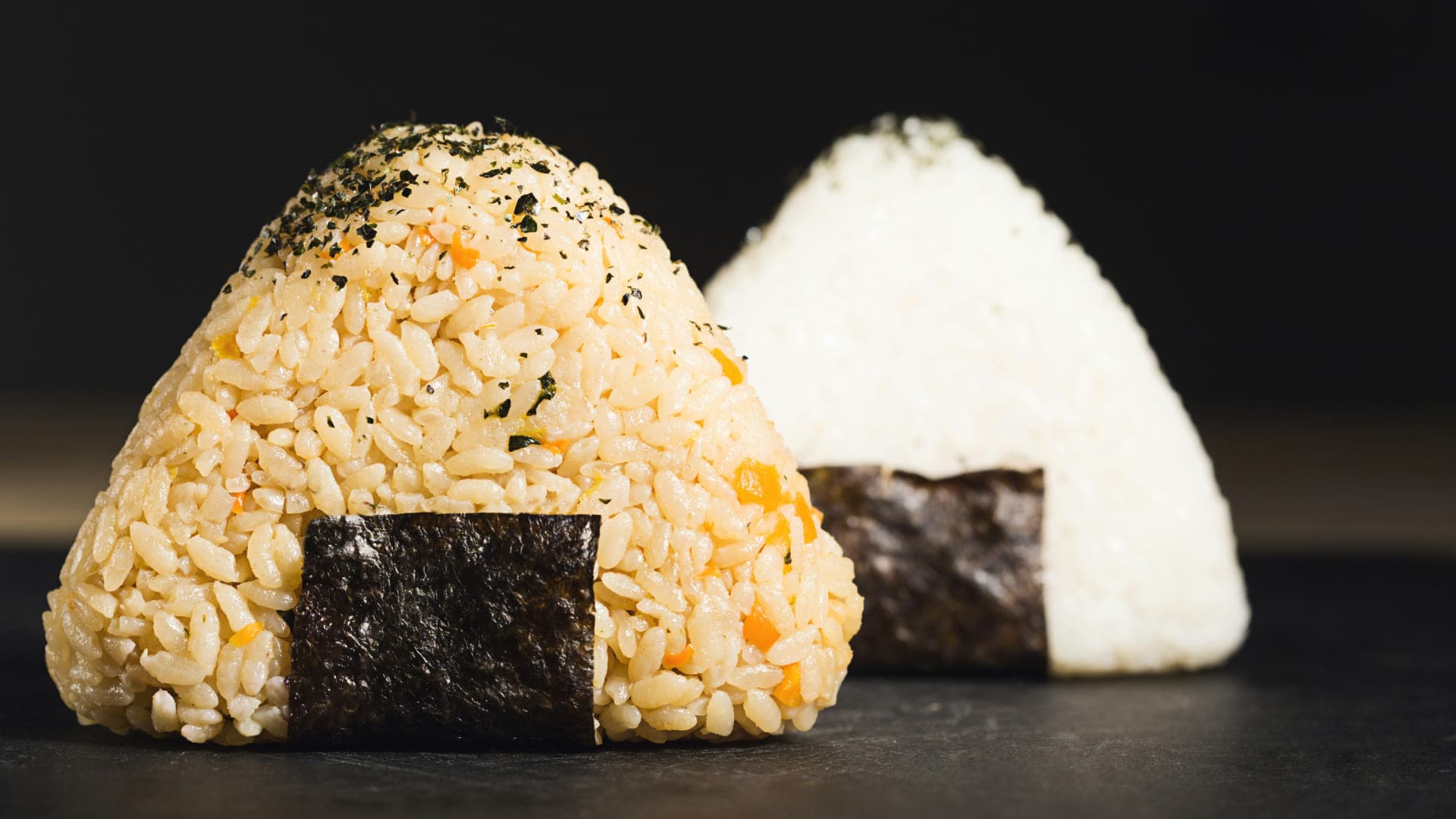
Onigiri, Japanese rice balls shaped into triangles or cylinders, are the nation's beloved portable food that can be enjoyed anytime, anywhere. They are typically wrapped in nori (seaweed) and filled with various ingredients. The versatility of onigiri has led to countless creative variations.
These rice balls are particularly popular among travelers who appreciate their convenience at Japanese convenience stores. Their appeal lies in both their ease of eating with one hand and the deep flavors created by different ingredient combinations. Onigiri has been a staple of Japanese daily life for generations. Why not try various types and find your favorite?
2. Takikomi gohan (Japanese mixed rice)
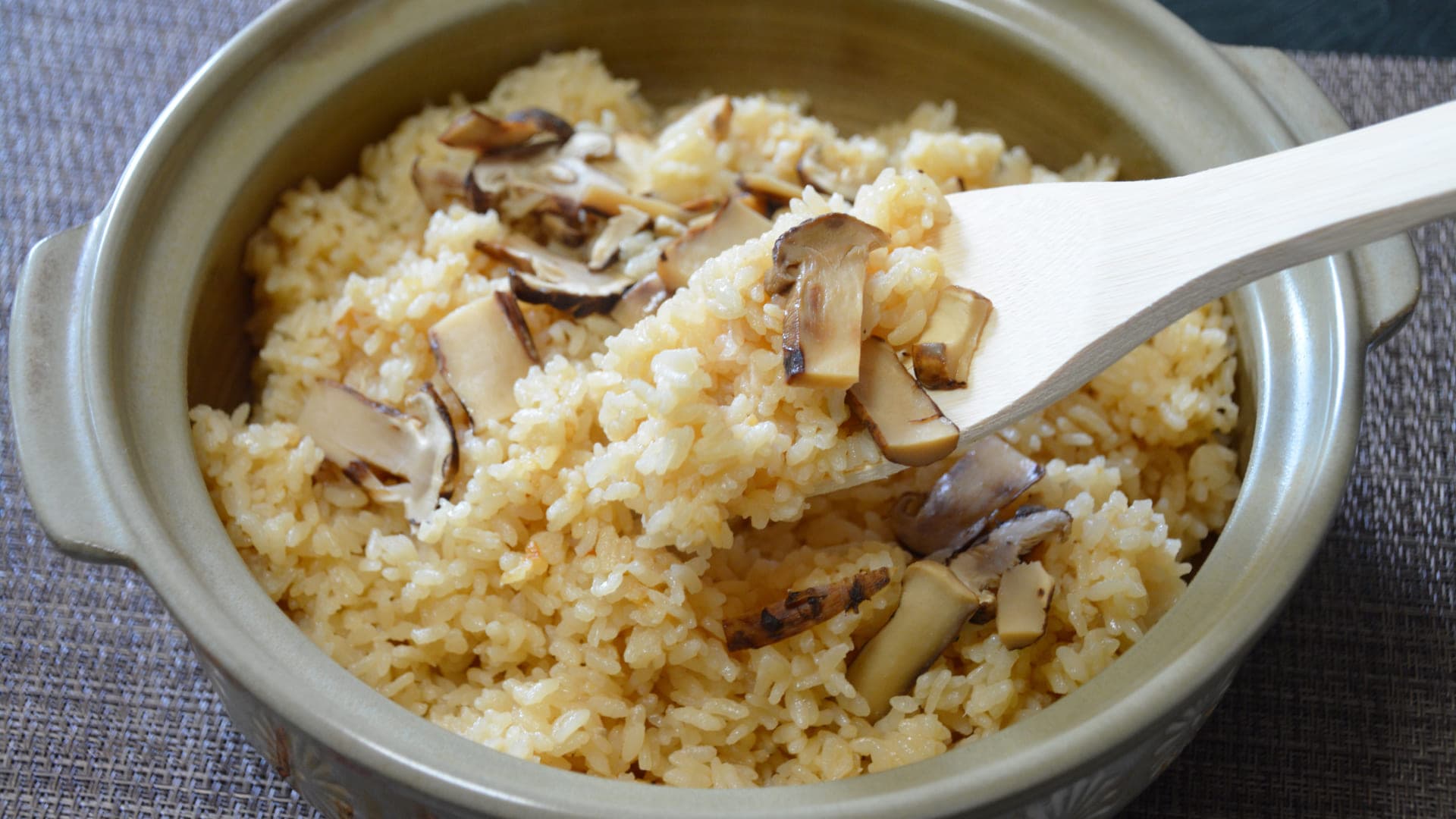
Takikomi gohan is a traditional Japanese cooking method where rice is cooked together with dashi broth, seasonings, and various ingredients. It offers many seasonal variations using mountain vegetables, seafood, mushrooms, chicken, and other ingredients that change with the seasons. The umami from these ingredients penetrates each grain of rice, creating an exquisite flavor.
The fragrance of freshly cooked takikomi gohan and the fluffy texture of the rice are simply exceptional. Many people (myself included!) love the slightly crispy 'okoge' - the rice that gets lightly scorched at the bottom of the pot.
What makes takikomi gohan special is that it tastes delicious even when cold, as the flavors continue to develop over time. While it's a common home-cooked dish, it's also served at high-end traditional restaurants, showcasing the depth of Japanese cuisine.
Fish dishes
As an island nation surrounded by seas on all sides, Japan's rich seafood has been an essential and cherished part of its culinary culture for centuries. Japanese seafood dishes showcase diverse cooking methods, from raw preparations like sashimi and sushi to grilled and simmered fish.
Japanese seafood cuisine, which maximizes the freshness and umami of ingredients, truly represents the essence of washoku that has captured global attention. With each bite, you'll experience the perfect harmony between the fish's natural flavors and the chef's skillful preparation. During your stay in Japan, we encourage you to try as many seafood dishes as possible!
3. Sushi

Perhaps sushi needs no introduction, as it's one of Japan's most globally recognized dishes. While overseas sushi is often associated with 'sushi rolls,' in Japan, sushi typically refers to nigiri-zushi - fresh seafood placed atop vinegared rice (shari). The variety of sushi is extensive, including maki (rolled sushi), gunkan-maki (battleship rolls), and inari-zushi (sushi rice in fried tofu pouches).
From high-end sushi restaurants showcasing master chefs' skills to convenient conveyor-belt sushi establishments, you can enjoy sushi at various price points and styles. Take time to savor the perfect combination of moist vinegared rice and fresh ingredients - but remember, go easy on the soy sauce!
4. Sashimi
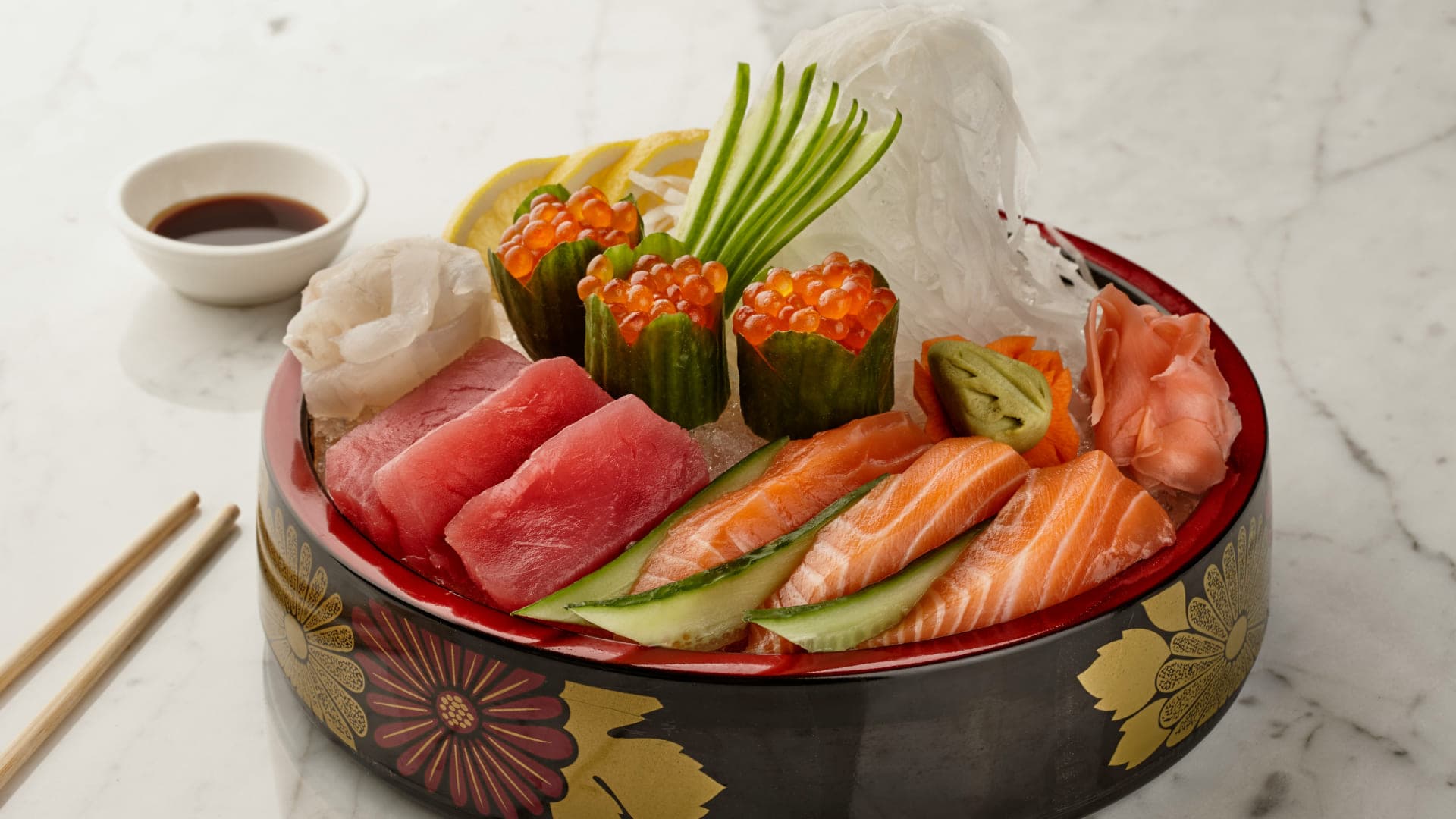
Sashimi is a dish of thinly sliced raw seafood that showcases the peak freshness and umami of its ingredients. While the preparation is simple, it requires a chef's expert eye and skill to select and slice the fish perfectly. The variety ranges from popular choices like tuna, salmon, sea bream, yellowtail, and amberjack to luxury items such as sea urchin and spiny lobster.
Sashimi is typically enjoyed with a small amount of soy sauce and garnished with freshly grated ginger and wasabi. With its beautiful presentation and melt-in-your-mouth texture, sashimi truly represents the essence of Japanese culinary culture.
5. Kaisendon (Seafood rice bowl)
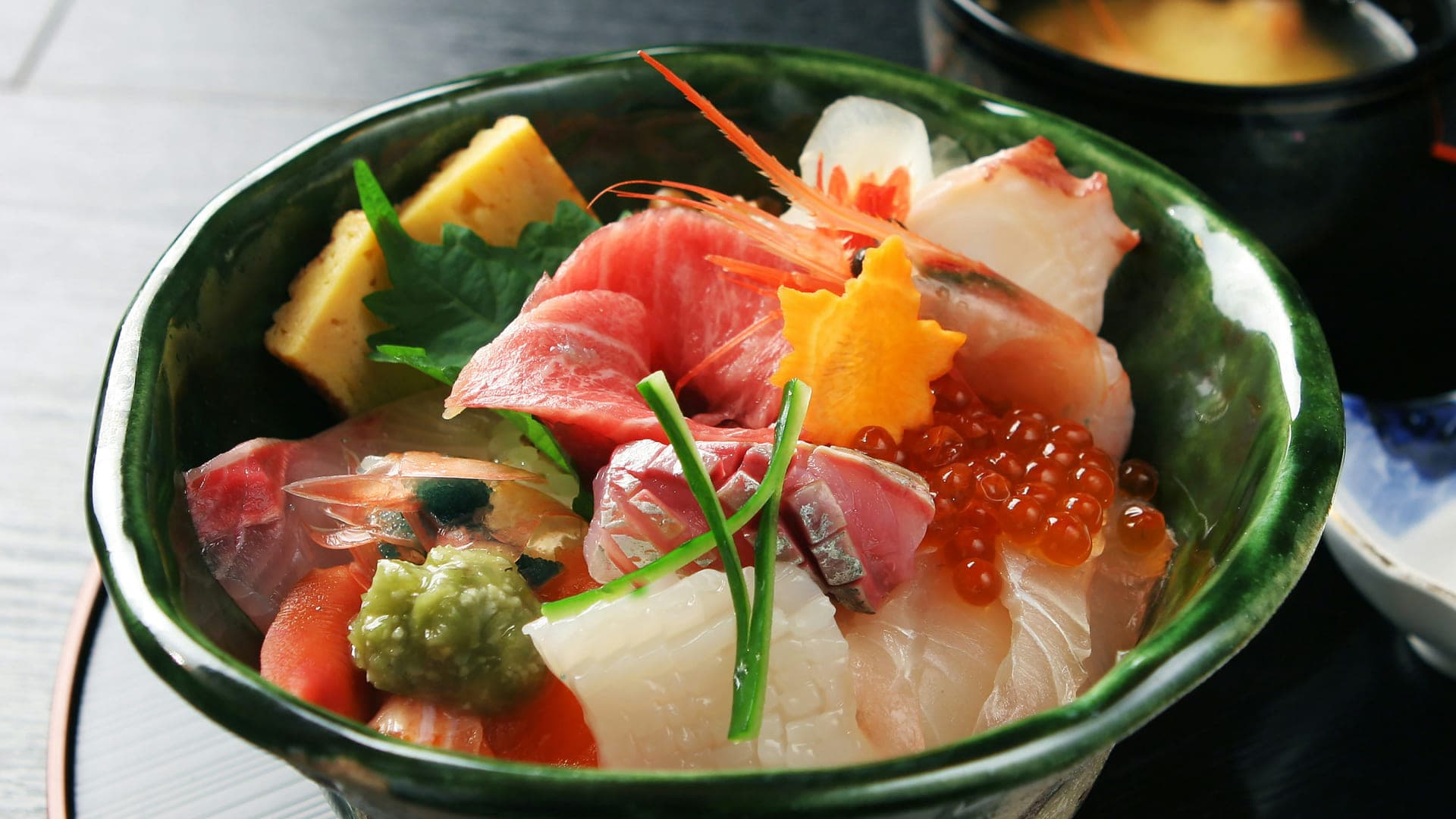
Kaisendon is a visually stunning rice bowl dish featuring an assortment of fresh seafood beautifully arranged over white rice. It typically includes various seafood such as tuna, salmon, squid, sea urchin, and salmon roe. At restaurants near fishing ports and fish markets, you can enjoy abundant seasonal local seafood (often at prices lower than market rates).
Kaisendon is usually eaten with soy sauce and wasabi according to taste. It's a luxurious dish that lets you enjoy the different textures and umami of colorful ingredients, complemented by traditional condiments.
6. Unaju (Grilled eel rice box)
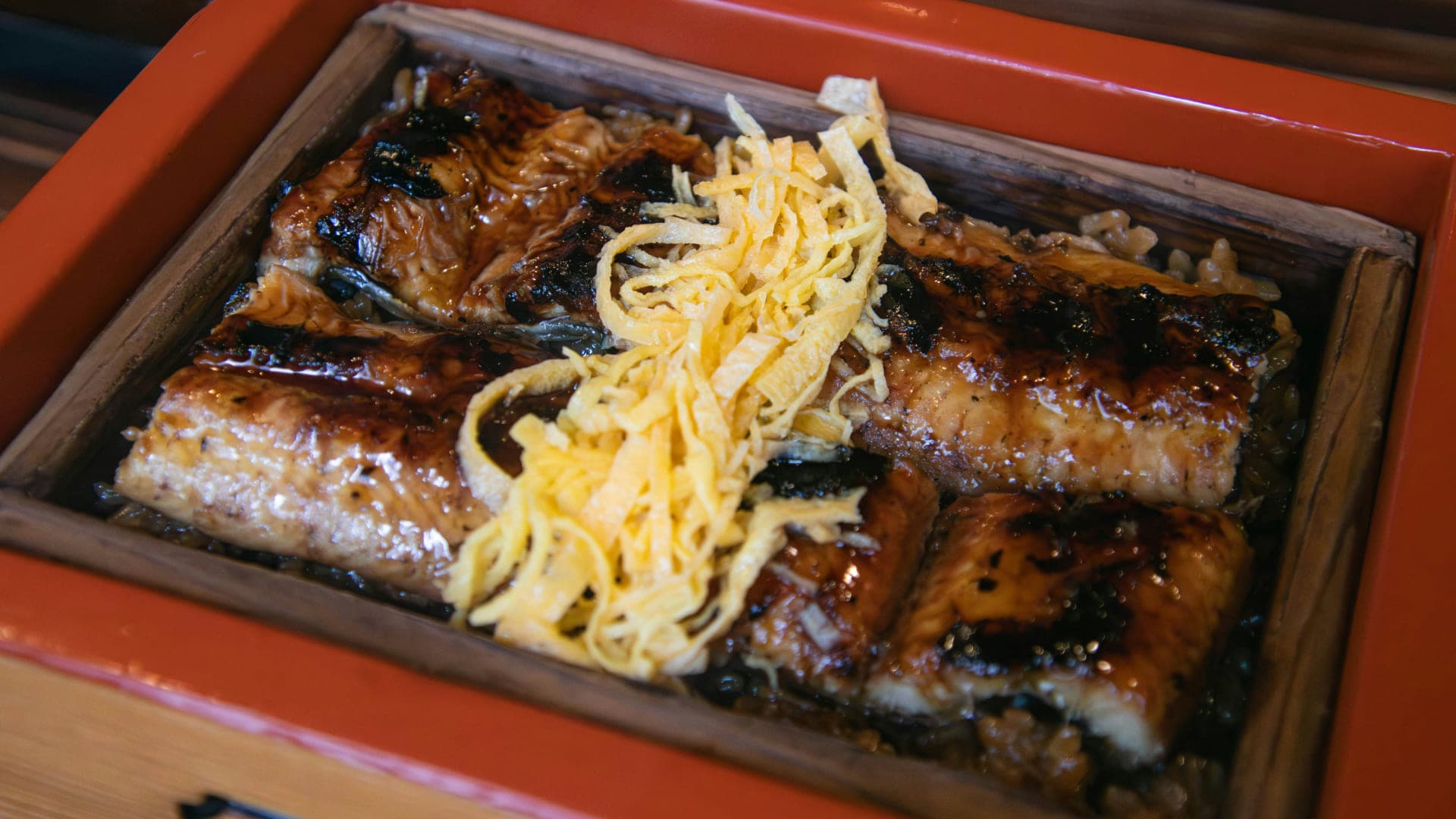
Unaju is a luxurious dish featuring grilled eel (unagi) served over fluffy white rice in a lacquered box. The eel is carefully grilled and repeatedly basted with a special sauce by skilled chefs, making it one of Japan's premier traditional delicacies.
The eel's glossy caramelized exterior and tender texture create an exquisite combination. Sprinkling sansho (Japanese pepper) powder enhances its aromatic flavors.
In Japan, eel is considered a stamina-boosting food for surviving the intense summer heat, traditionally eaten on the specific day called "Doyo no Ushi no Hi." While this seasonal custom exists, unaju can be enjoyed year-round.
7. Yakizakana (Grilled fish)
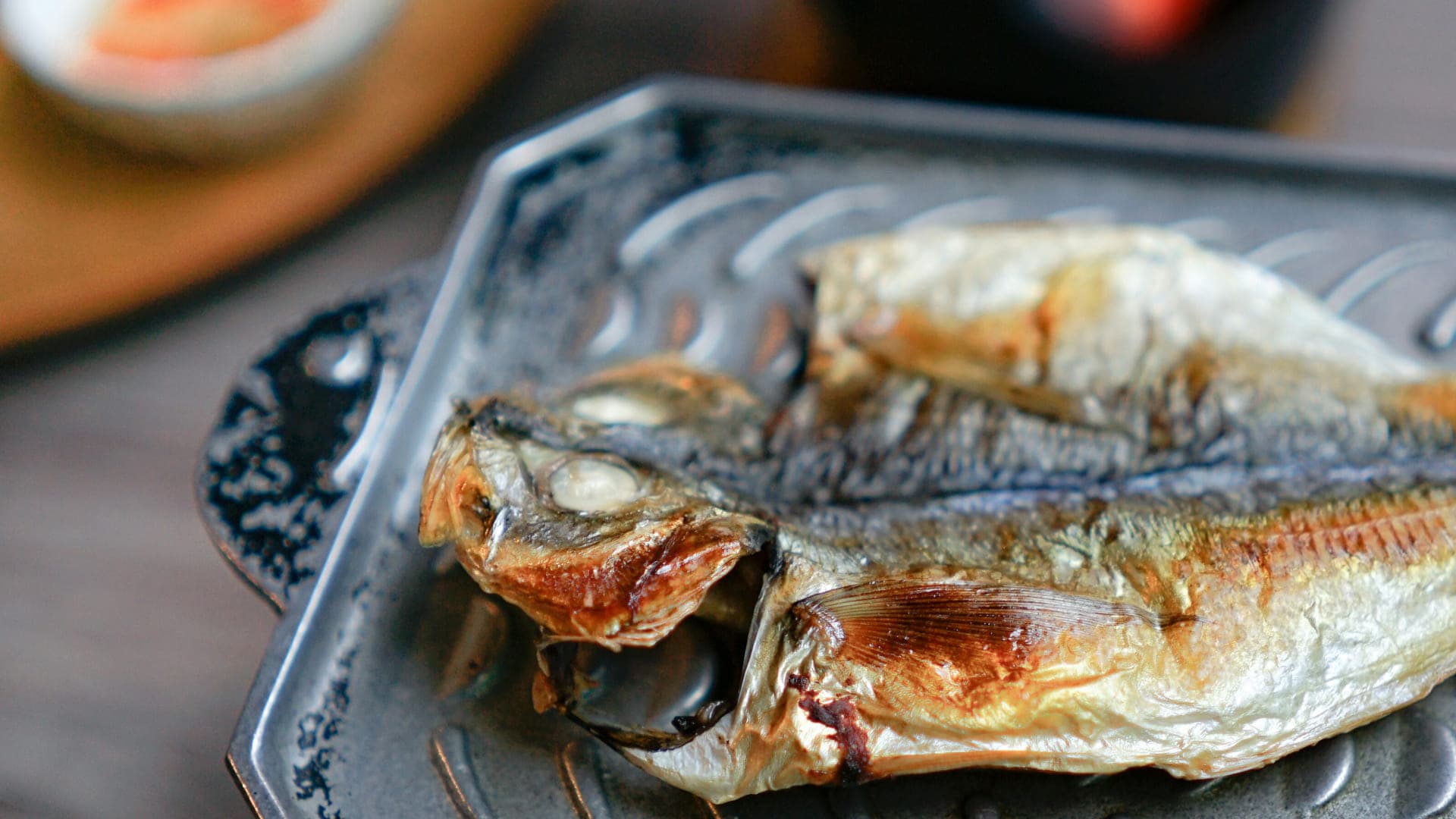
Yakizakana (grilled fish) is a humble yet profound traditional Japanese dish prepared by grilling fish plain, with salt, or with teriyaki sauce. Seasonal fish such as salmon, mackerel, horse mackerel, and Pacific saury are typically grilled simply with salt, exemplifying washoku's philosophy of bringing out the natural flavors of ingredients.
The dish perfectly balances the tender, flaky flesh with the crispy, aromatic skin. Widely enjoyed across Japan, yakizakana appears everywhere from home dining tables to high-end traditional restaurants.
8. Nizakana (Simmered fish)
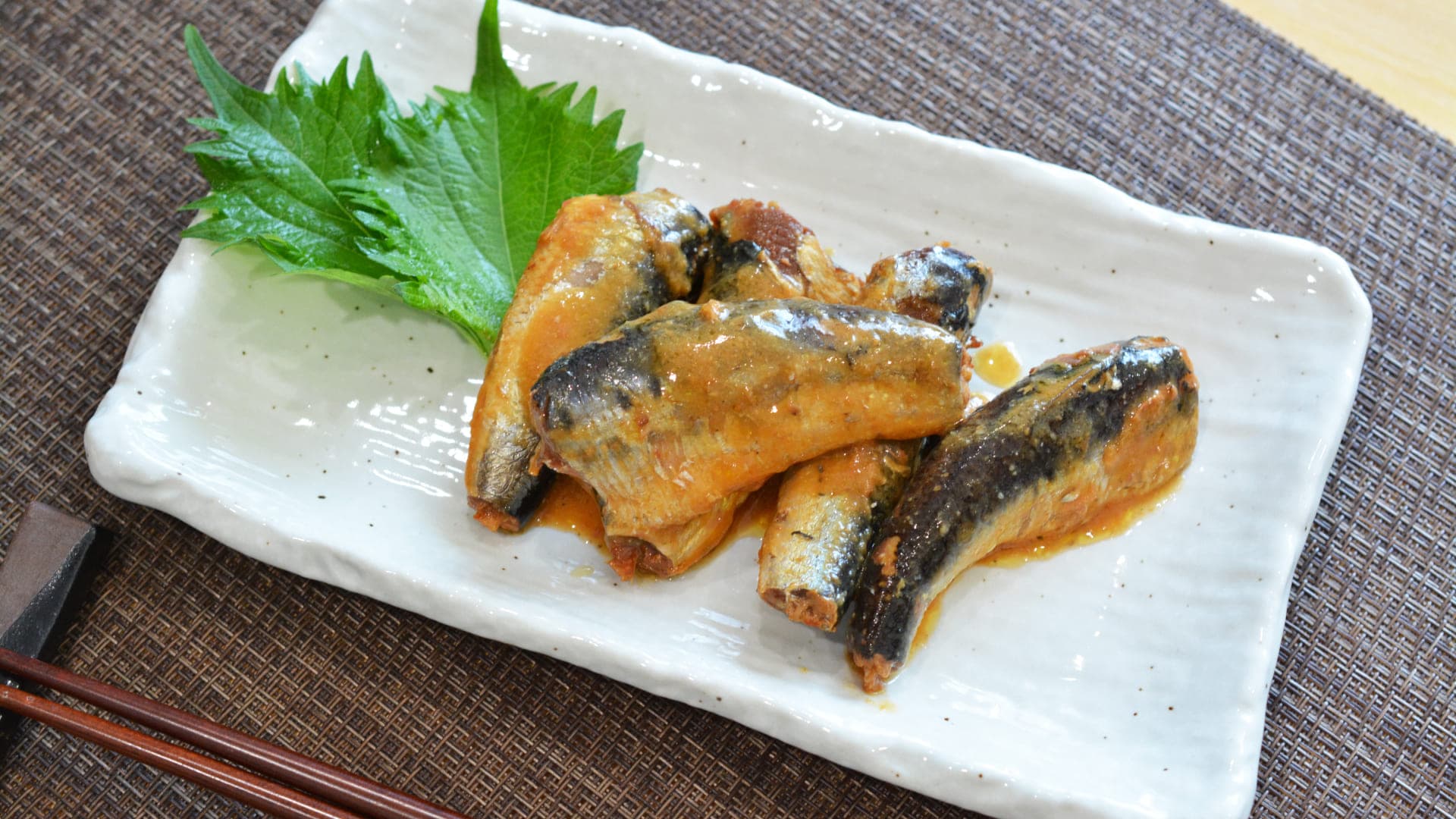
Nizakana (simmered fish) is a traditional Japanese cooking method where fish is gently cooked in a broth based on soy sauce and mirin. The seasoning and cooking time are adjusted according to the type of fish - such as flounder, mackerel, or cod - to bring out each fish's unique characteristics.
The slow cooking process makes the fish so tender it easily falls apart with chopsticks, while allowing the dashi broth's umami to thoroughly penetrate. Offering a different taste experience from grilled fish, it pairs perfectly with white rice!
Meat dishes
Japan has developed its own unique meat cuisine culture, ranging from luxurious dishes using premium wagyu beef - such as yakiniku, sukiyaki, and shabu-shabu - to more casual fare like yakitori (grilled chicken skewers) and rice bowls such as katsudon and gyudon. Each dish employs specific techniques to enhance the meat's umami, with different seasonings and cooking methods creating distinctly unique flavors.
Japanese meat dishes have transcended traditional washoku boundaries to captivate food enthusiasts worldwide.
9. Yakiniku
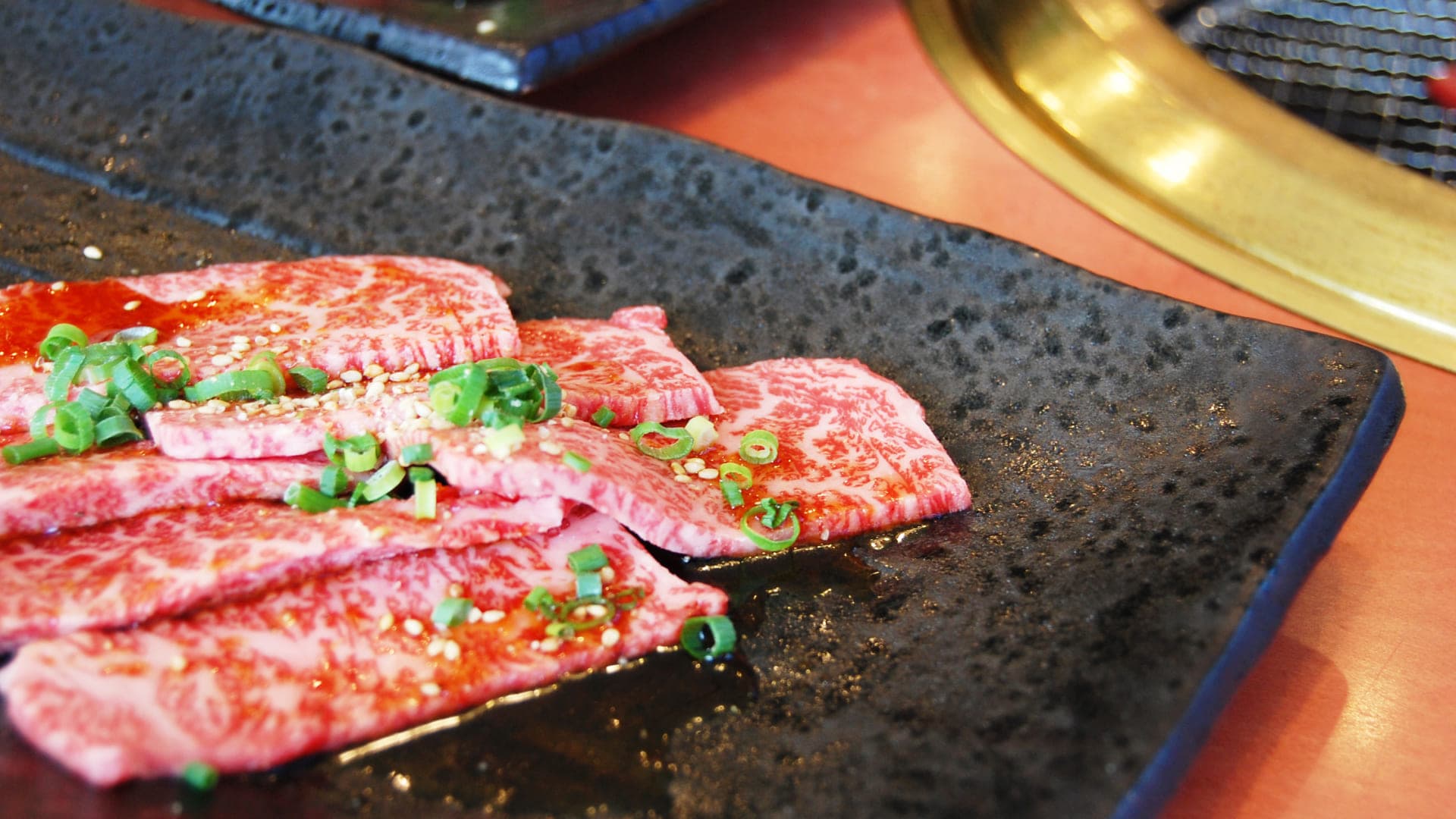
Yakiniku is a popular communal dining experience where various cuts of meat are grilled on a special grill or hotplate at the table. Japanese wagyu beef, famous worldwide for its fine marbling and rich umami, is particularly celebrated. Different cuts like kalbi (ribs), loin, and tan (beef tongue) each offer unique flavors and textures. Most restaurants also serve vegetables and mushrooms for grilling.
You can enjoy the meat with various condiments like dipping sauce, ponzu (citrus soy sauce), salt, or wasabi, and cook each piece to your preferred level of doneness!
10. Sukiyaki
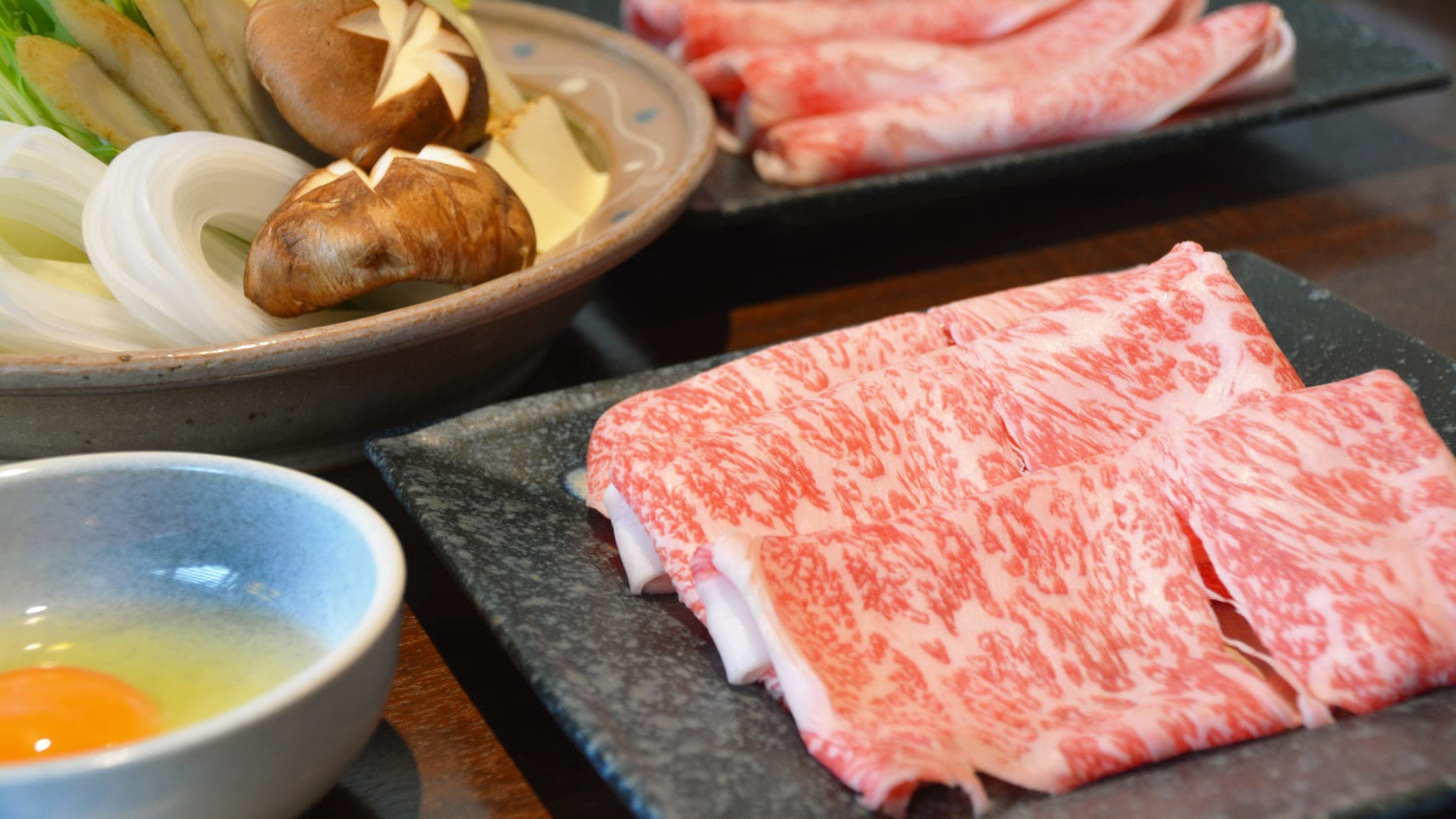
Sukiyaki is a classic Japanese hot pot dish where beef and vegetables are simmered in a sweet and savory broth (warishita). Premium wagyu sukiyaki, using tender marbled beef, is considered one of Japan's most luxurious dishes. Thinly sliced beef is briefly seared, then simmered with vegetables such as Chinese cabbage, shiitake mushrooms, green onions, and chrysanthemum greens, along with shirataki noodles and grilled tofu.
In Japan, the ingredients are traditionally dipped in raw egg before eating. The melt-in-your-mouth beef combined with the sweet and savory broth creates an exceptional dining experience.
11. Shabu-shabu
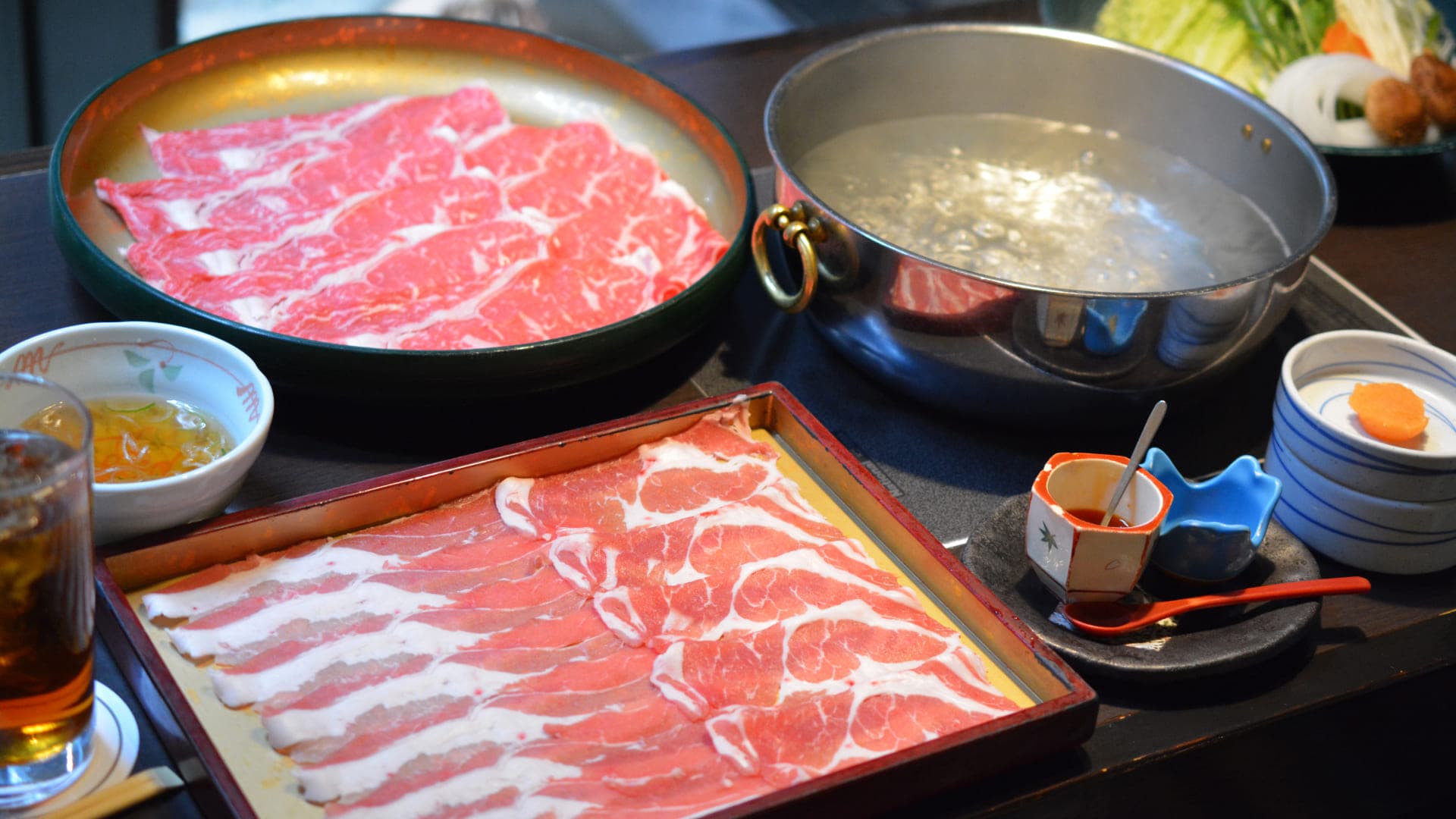
Shabu-shabu is a hot pot dish where thin slices of beef or pork are briefly swished in hot kombu-based dashi broth. The name comes from the "swish-swish" sound made when cooking the meat. When using marbled wagyu beef, the meat becomes melt-in-your-mouth tender.
In Japan, the dish is typically enjoyed with vegetables like Chinese cabbage, green onions, and chrysanthemum greens. Served with ponzu citrus sauce or sesame dipping sauce, shabu-shabu offers a light yet deeply flavorful Japanese hot pot experience.
12. Yakitori

Yakitori is a popular Japanese dish of chicken skewers grilled over charcoal. It uses various parts of the chicken - from thigh, breast, and neck meat (seseri) to organs like liver and gizzard, even cartilage - exemplifying the Japanese practice of using ingredients fully. These skewers are typically served with either tare (sweet soy sauce-based glaze) or salt.
A staple at Japanese izakaya (taverns), yakitori makes an excellent accompaniment to drinks like beer, highballs, or sake! The distinctive smoky aroma from charcoal grilling and the rich umami of the carefully grilled meat create an exceptional flavor experience.
13. Gyudon
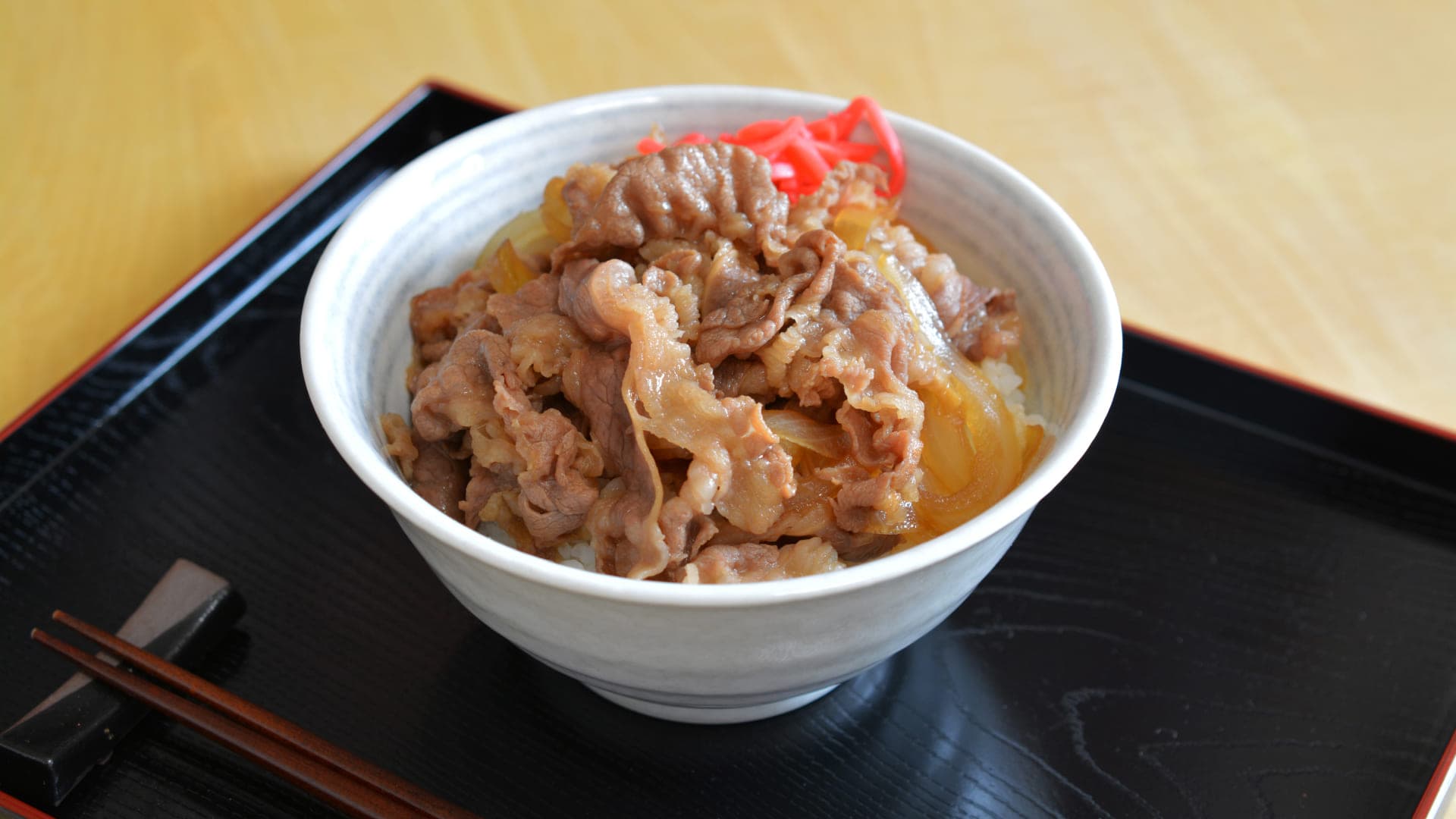
Gyudon is a classic Japanese rice bowl dish featuring thinly sliced beef and onions simmered in a sweet and savory soy sauce-based broth. Beloved as affordable comfort food, it's especially popular at chain restaurants that operate 24 hours a day and can be found throughout Japanese cities. The dish creates a perfect harmony when the flavorful broth, enriched with the natural sweetness of onions and beef's umami, soaks into the rice.
Common toppings include pickled ginger, shichimi (seven-spice powder), and raw egg. With its focus on speed, efficiency, and consistent quality, gyudon has become an iconic representation of modern Japanese food culture.
14. Katsudon
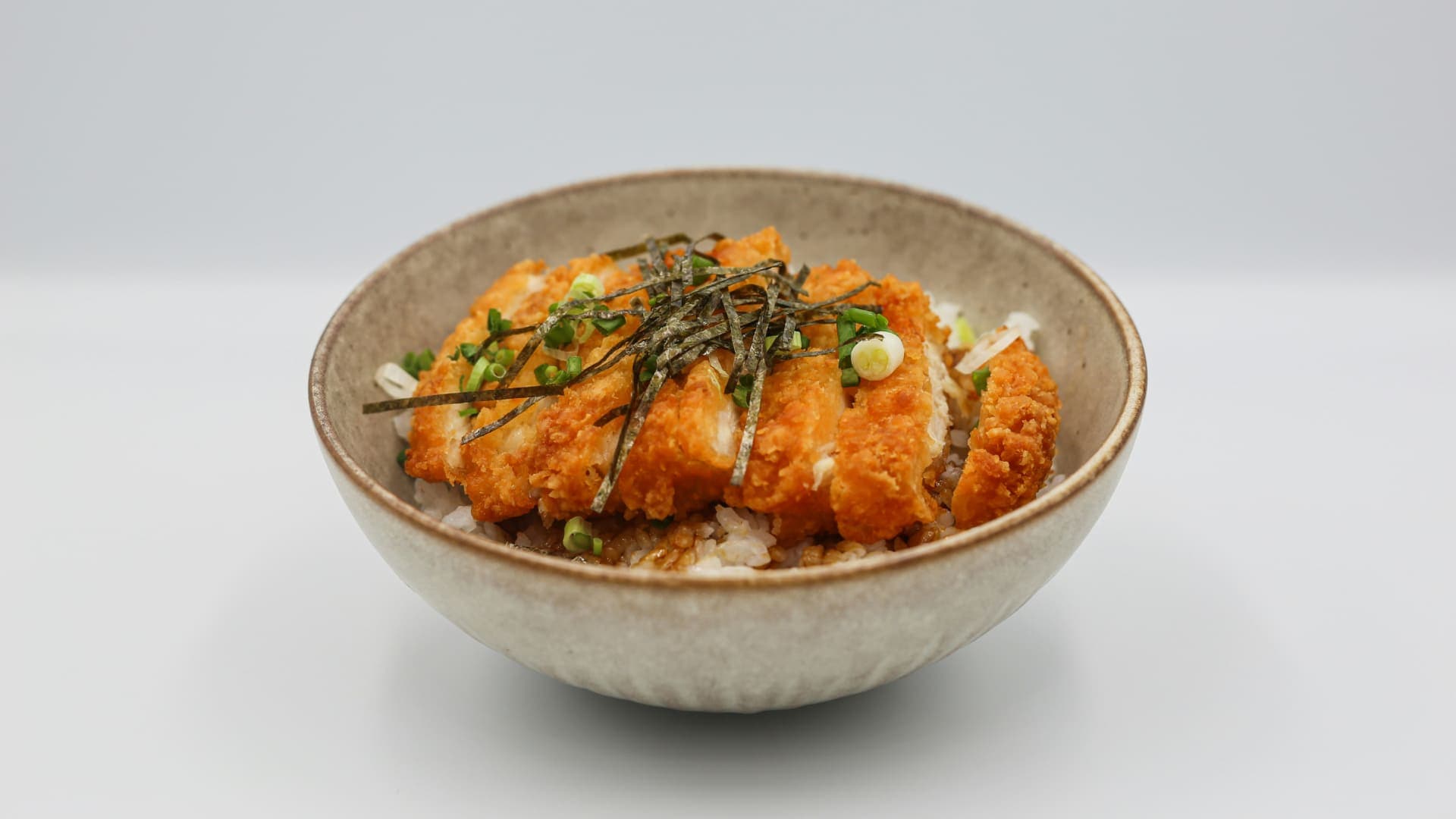
Katsudon is a beloved Japanese rice bowl featuring crispy breaded pork cutlet (tonkatsu) and beaten eggs simmered in sweet and savory dashi broth. This luxurious dish offers multiple textures: the crunch of the breading combines with the fluffy eggs, while the cutlet absorbs the broth to become tender, creating a deep flavor profile enhanced by sweet onions.
Although originated from Japanese Western-style cuisine (yoshoku), katsudon has evolved into a unique fusion dish that harmoniously blends Western elements with traditional Japanese dashi flavors.
Noodle dishes
Japanese noodle culture is remarkably diverse and profound, featuring soba made from buckwheat flour, udon from wheat flour, ramen that evolved from Chinese origins, and yakisoba, a festival favorite. Each type has its distinct characteristics, from noodle thickness and firmness to soup and dashi flavors.
Regional variations offer unique seasonings and eating styles, while serving options range from hot soups to chilled dishes with dipping sauce, making Japanese noodles enjoyable year-round.
15. Soba
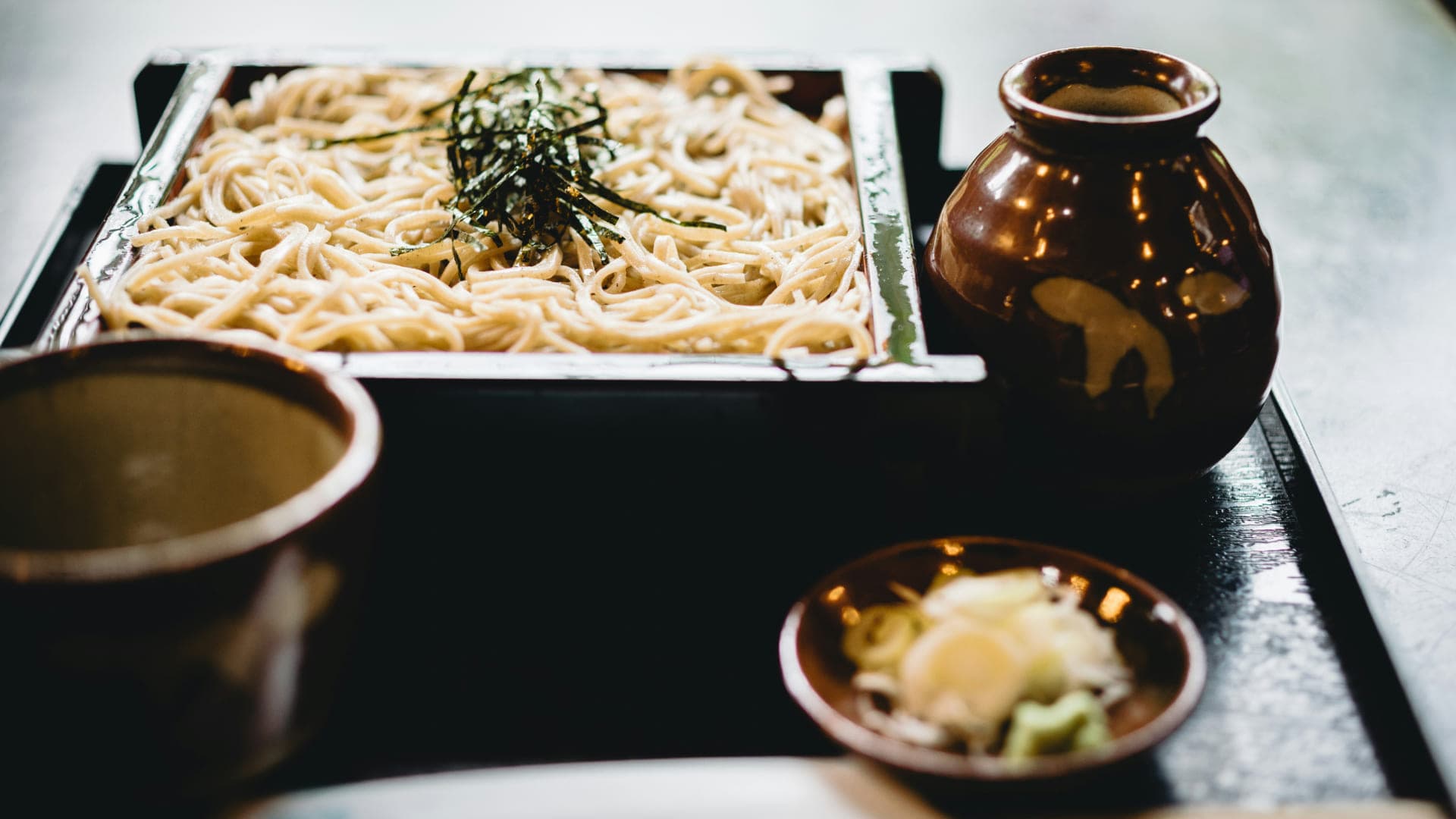
Soba is a traditional Japanese noodle dish made from buckwheat flour, characterized by its thin, firm noodles and distinctive aroma. It's commonly served in two styles: hot soba in broth (kakesoba) or chilled with dipping sauce (zarusoba).
Cold zarusoba is especially popular in summer, enjoyed with condiments like chopped green onions and wasabi for a refreshing taste. Hot kakesoba, with its soy sauce-based dashi broth, provides warmth during cold seasons.
In Japan, there's a tradition of eating "toshikoshi soba" on New Year's Eve, symbolizing longevity and good fortune. Some say the easily-cut noodles represent leaving misfortunes behind - making soba both a cultural dish and a symbol of Japanese traditions!
16. Udon
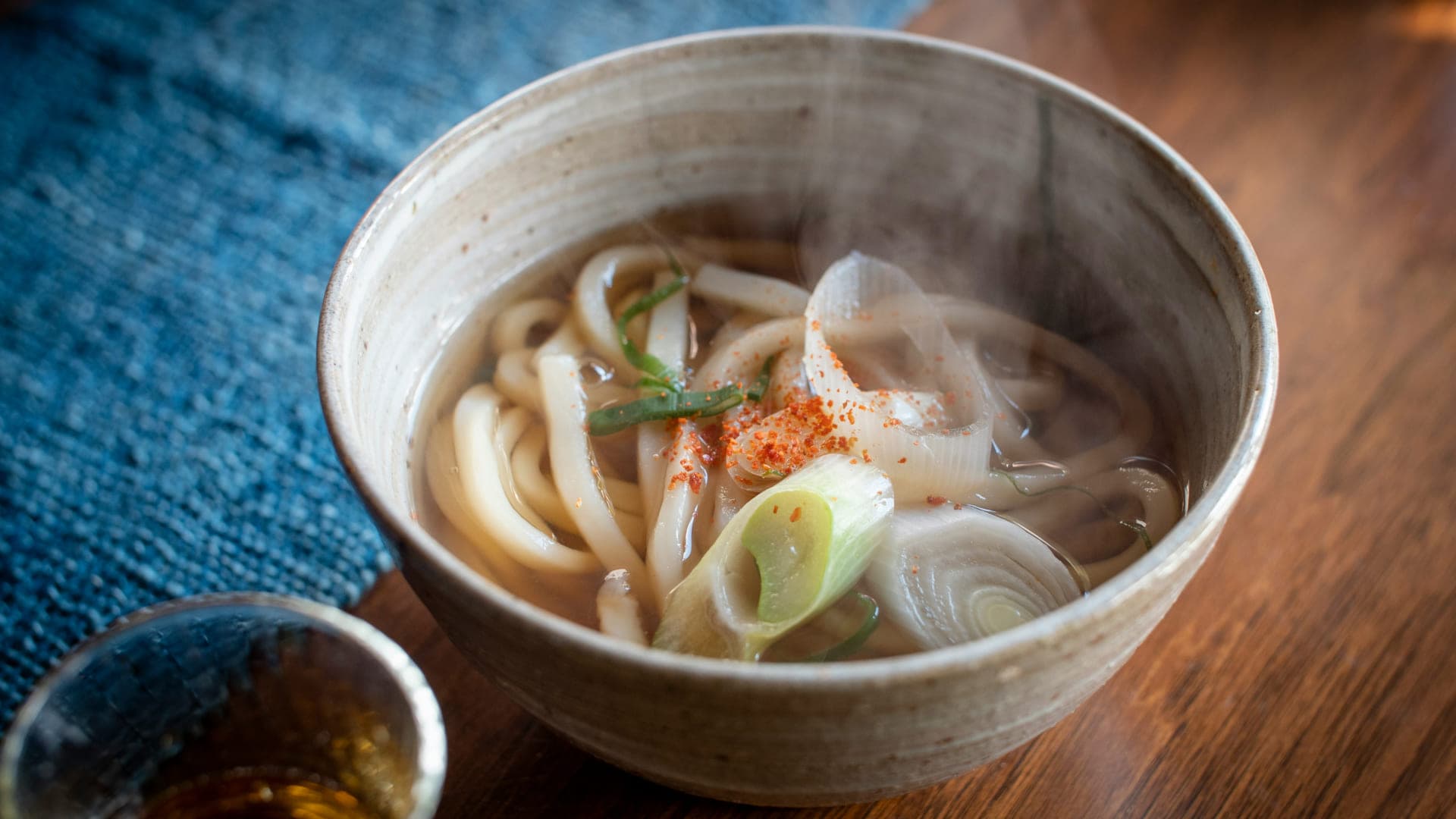
Udon is a traditional Japanese noodle dish featuring thick wheat noodles known for their chewy texture and mild flavor. Regional variations are distinct across Japan: the Kansai region (including Osaka and Kyoto) prefers light, dashi-flavored broth, while the Kanto region favors stronger seasonings. Kagawa Prefecture, famous for Sanuki udon, is particularly known for its firm, perfectly textured noodles.
The dish ranges from simple classics like basic hot udon (kakeudon), plain boiled udon (kamaage), and chilled udon (zaraudon) to creative variations such as tempura udon and curry udon, making it a versatile national comfort food.
17. Ramen
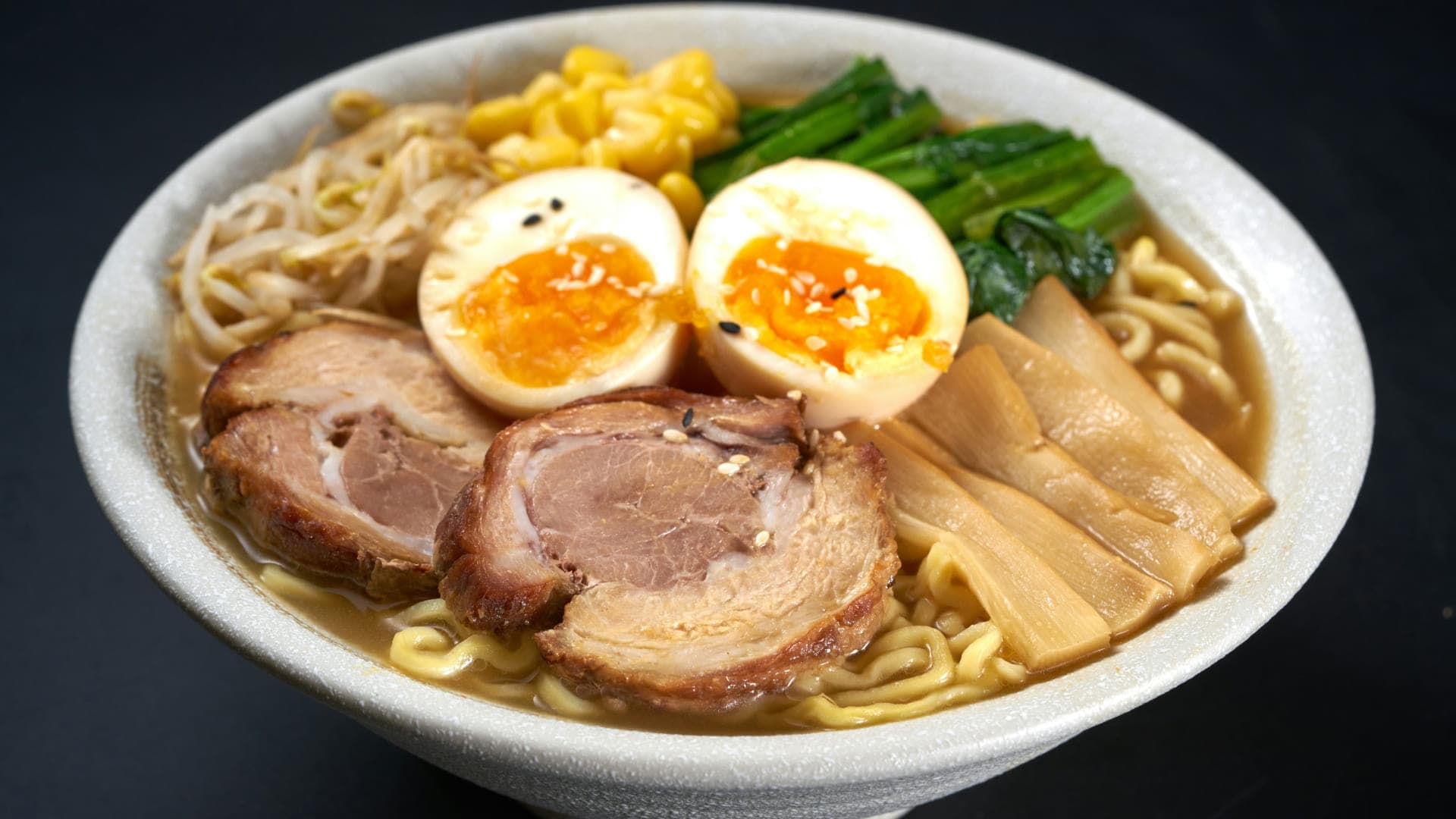
Ramen, originally from China but uniquely evolved in Japan, is a beloved noodle dish enjoyed by people of all ages. The enjoyment comes not only from the noodles but also from various toppings like chashu (braised pork), bamboo shoots, nori seaweed, and seasoned eggs.
The soup varieties are diverse - soy sauce, miso, salt, and tonkotsu (pork bone) - with distinct regional specialties like Sapporo's miso ramen, Hakata's tonkotsu ramen, and Tokyo's soy sauce ramen. Each ramen shop carefully selects and prepares their ingredients, creating unique and profound flavor profiles.
Ramen is so popular in Japan that it's a common conversation topic even among strangers discussing their favorite styles. Many shops stay open late, making ramen perfect not only for quick meals but also as a favorite post-drinking dish (called "shime no ippai").
18. Yakisoba
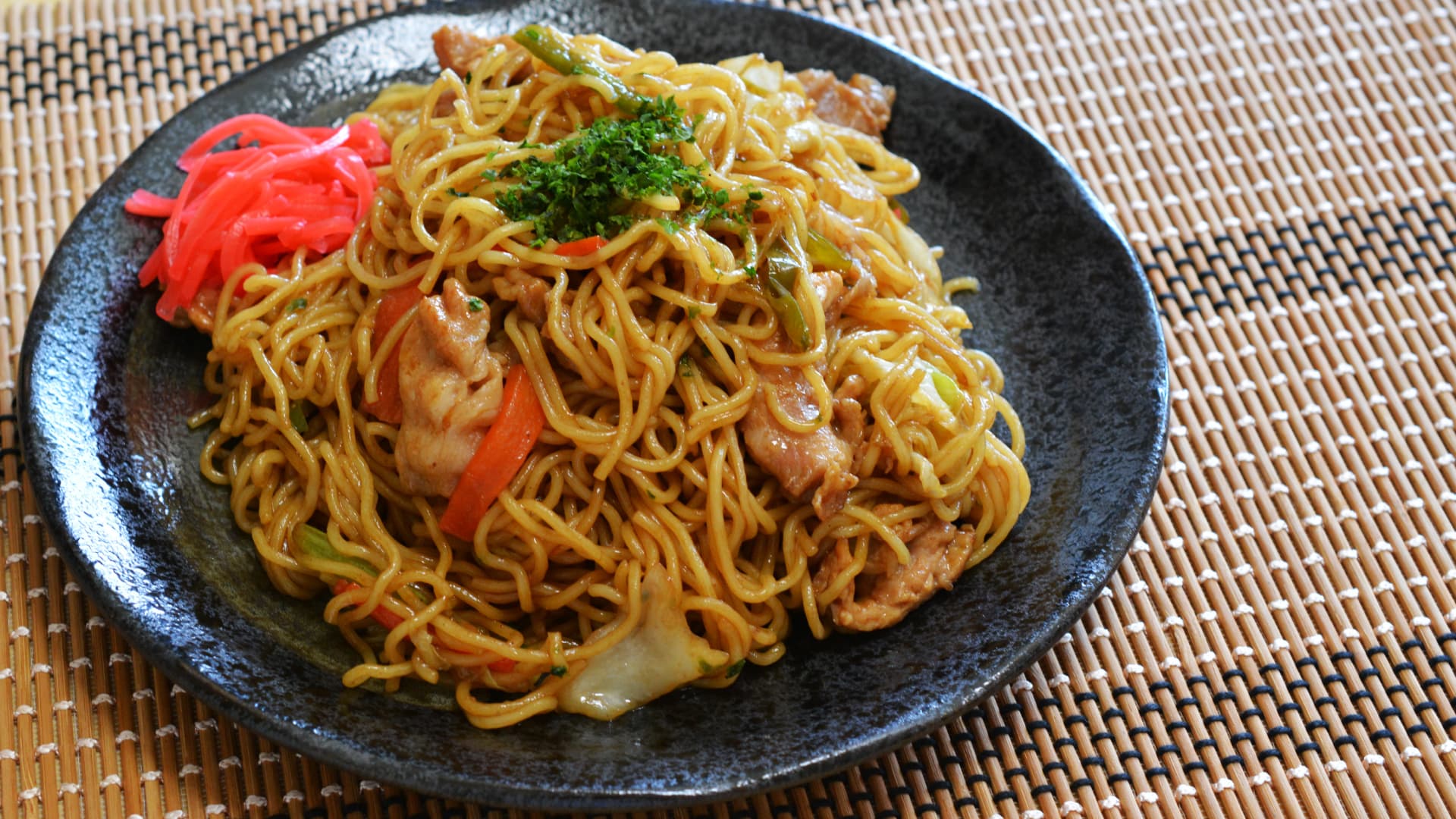
Yakisoba is a popular Japanese dish of stir-fried noodles with vegetables and meat, seasoned with a rich sauce. The classic ingredients include cabbage, bean sprouts, and pork, topped with pickled ginger, dried bonito flakes, and dried seaweed powder for color and flavor.
A staple at festival food stalls where its appetizing aroma attracts crowds, yakisoba is also a beloved home-cooked meal. Instant yakisoba is widely popular too, making it a convenient choice for camping and outdoor activities.
Deep-fried dishes
Japanese deep-fried dishes are characterized by their delicate breading and precise temperature control, resulting in a perfectly crispy finish. Tempura, with its light batter that preserves the ingredients' natural flavors, has become one of Japan's proudest contributions to global washoku cuisine.
Western-inspired dishes like katsu and croquettes have evolved uniquely in Japan, creating new culinary traditions such as tonkatsu and kushiage (deep-fried skewers). Other techniques like satsumaage (fish cake) and karaage (Japanese fried chicken) lock in the umami of ingredients. Each dish achieves remarkably refined flavors through specialized sauces and cooking methods.
19. Tempura
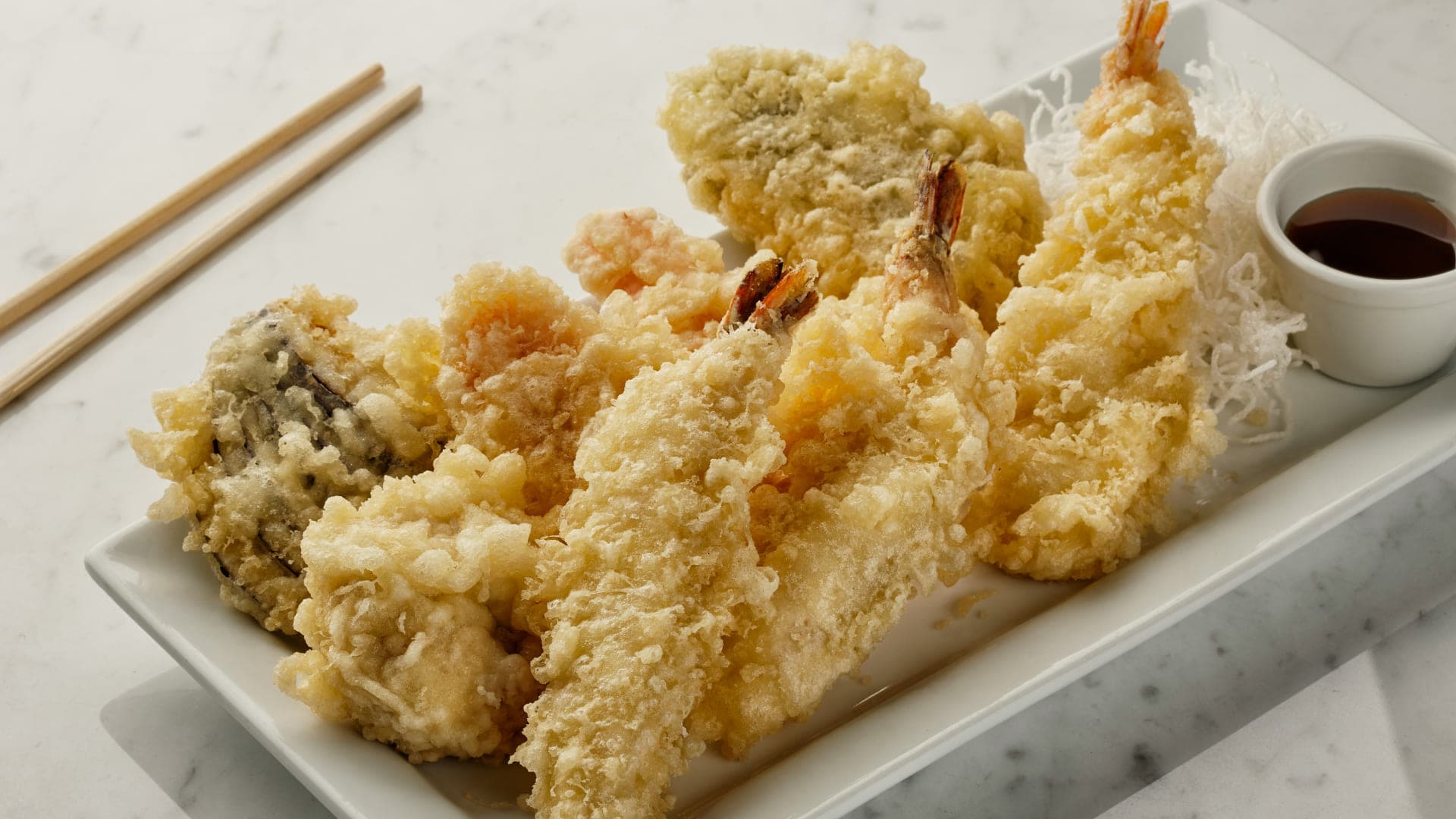
Tempura is an iconic Japanese dish where seafood (like shrimp and white fish) and seasonal vegetables are coated in light batter and delicately fried. The harmony between the crispy, airy coating and the fresh, juicy ingredients inside enhances the natural flavors of each component.
Each piece is carefully fried and served piping hot, enjoyed with tempura dipping sauce or various salts (such as natural sea salt, matcha salt, seaweed salt, or rock salt). From high-end restaurant courses to casual tempura rice bowls and side dishes, tempura's refined taste has captured the attention of food lovers worldwide.
20. Kushiage
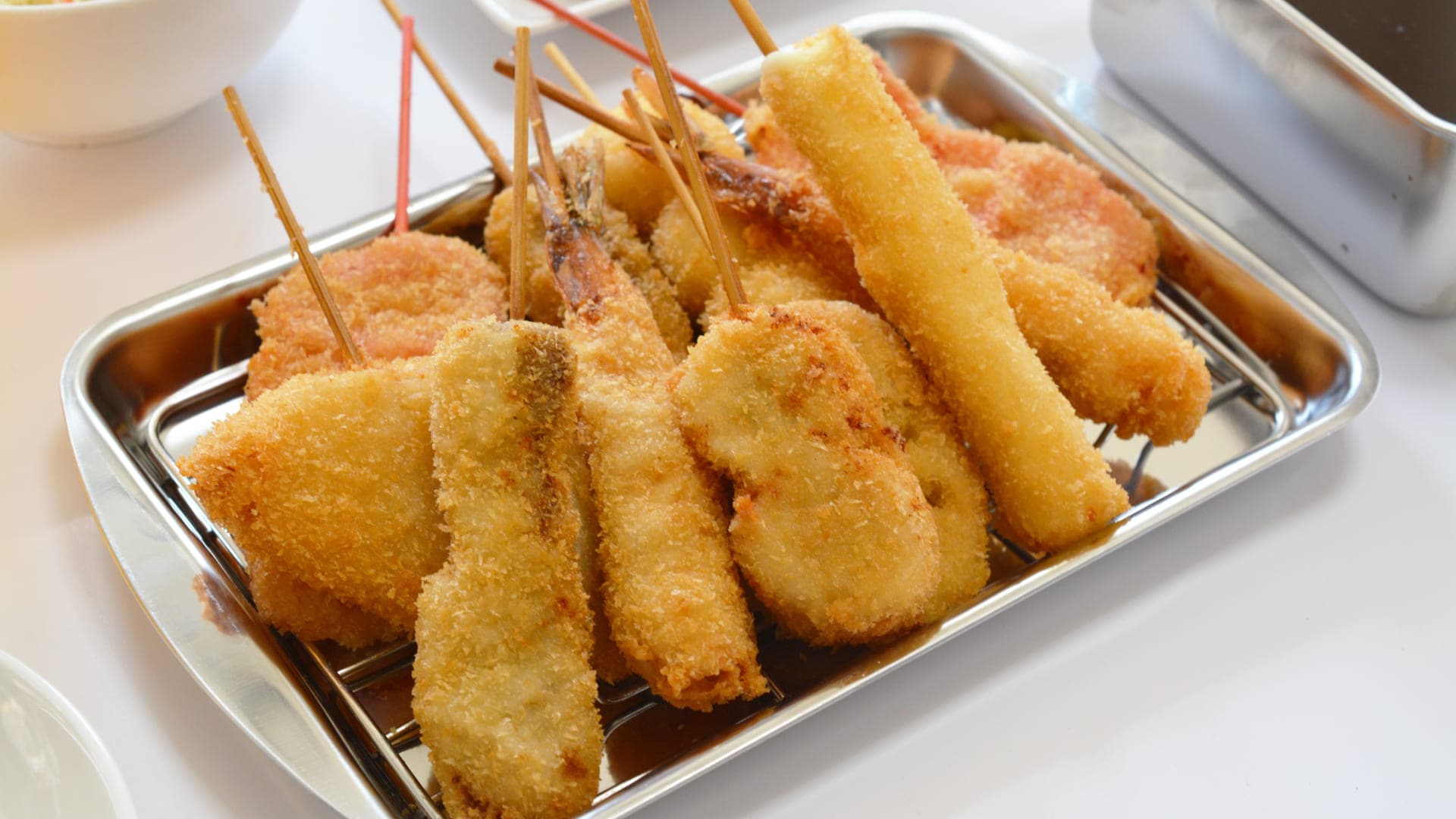
Kushiage, originating from Osaka, is a dish of bite-sized meat, seafood, and vegetables skewered, coated in breadcrumbs, and deep-fried to crispy perfection. The variety of ingredients is extensive, including shrimp, asparagus, beef, and quail eggs. It's typically eaten with sauce (Important note: each table gets its own sauce, and double-dipping is strictly forbidden!)
Popular across Japan, kushiage can be enjoyed at both high-end specialty restaurants and casual standing bars.
21. Tonkatsu
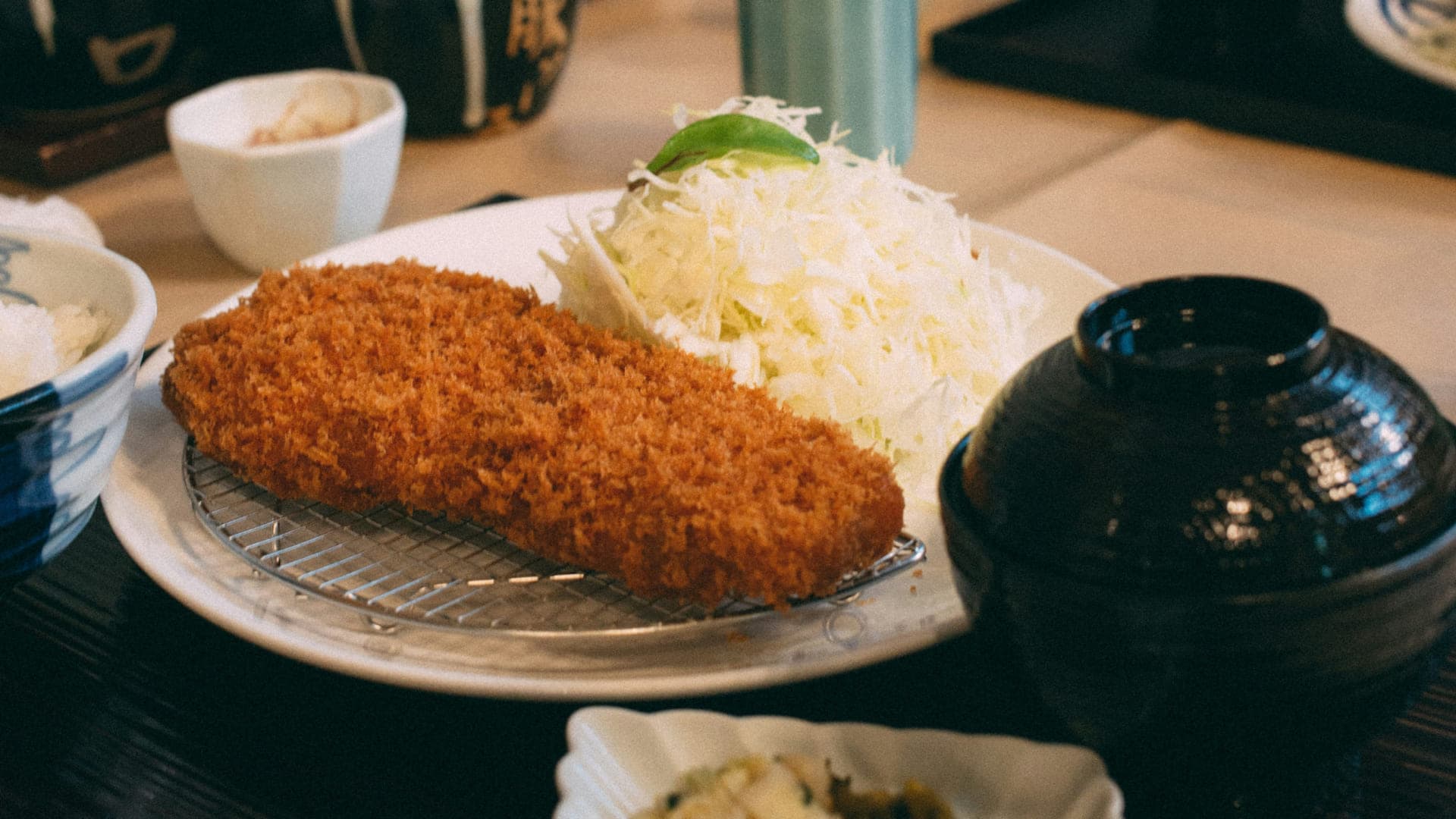
Tonkatsu, a Japanese evolution of Western-style cuisine, is a deep-fried breaded pork cutlet with a golden-brown crispy coating and juicy meat inside. It comes in variations like the tender rosu (loin) katsu and the leaner hire (tenderloin) katsu, each offering distinct flavors and textures.
Traditionally served with shredded cabbage, special tonkatsu sauce, and mustard, it has become a national favorite available everywhere from specialty restaurants to casual eateries.
22. Satsumaage
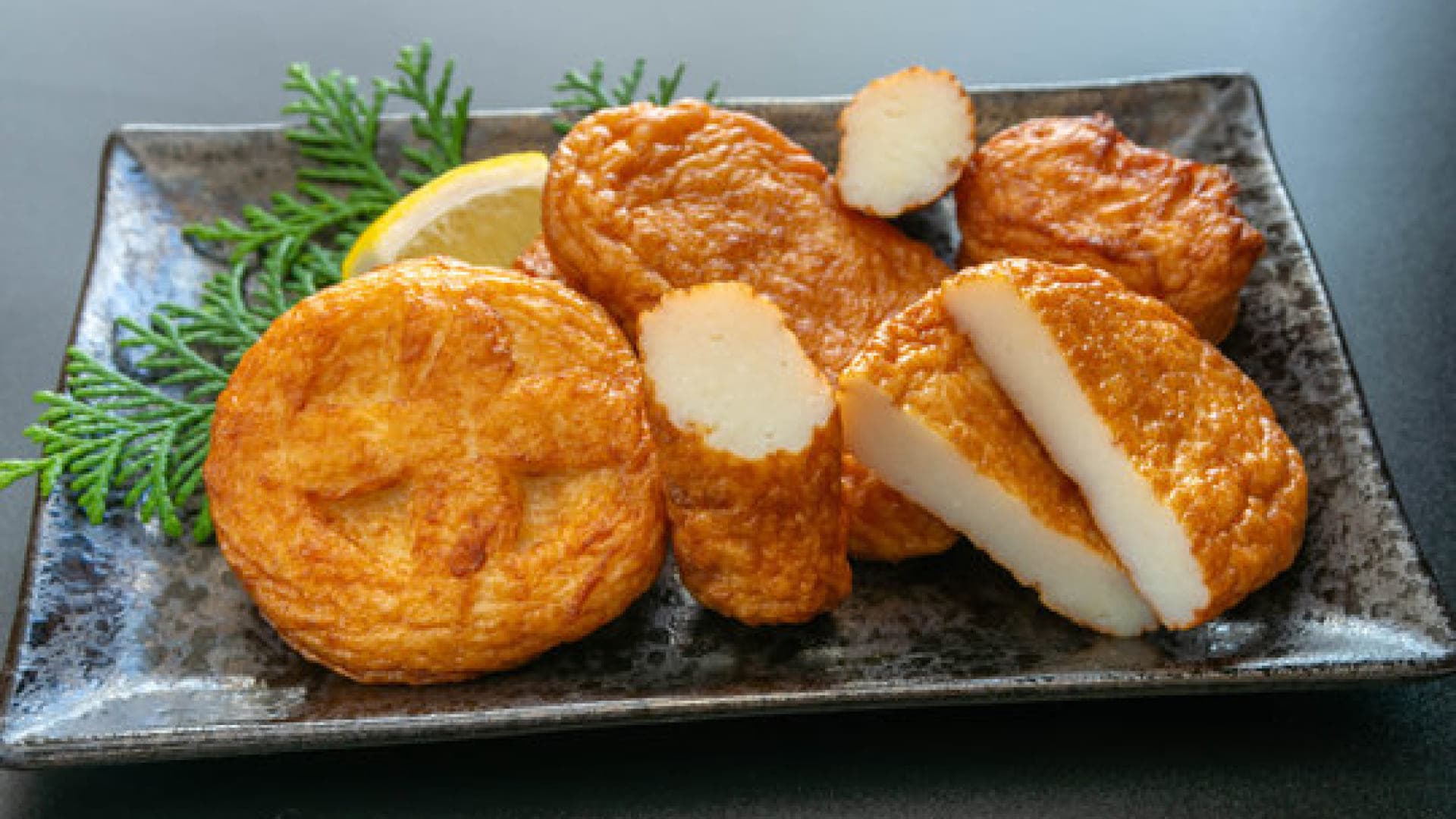
Satsumaage is a traditional deep-fried fish cake made from white fish paste mixed with vegetables and mountain yam, shaped in distinctive forms. Originating from Kagoshima Prefecture (former Satsuma domain), it's also known as "tempura" or "tsukeage" in some regions (distinct from the better-known tempura dish).
Made primarily with white fish paste, it has a fluffy texture and rich fish umami. Popular as a rice accompaniment and drinking snack, it's also a beloved ingredient in oden hot pot, where it absorbs the dashi broth for enhanced flavor - representing a nostalgic taste in traditional Japanese cuisine.
23. Karaage
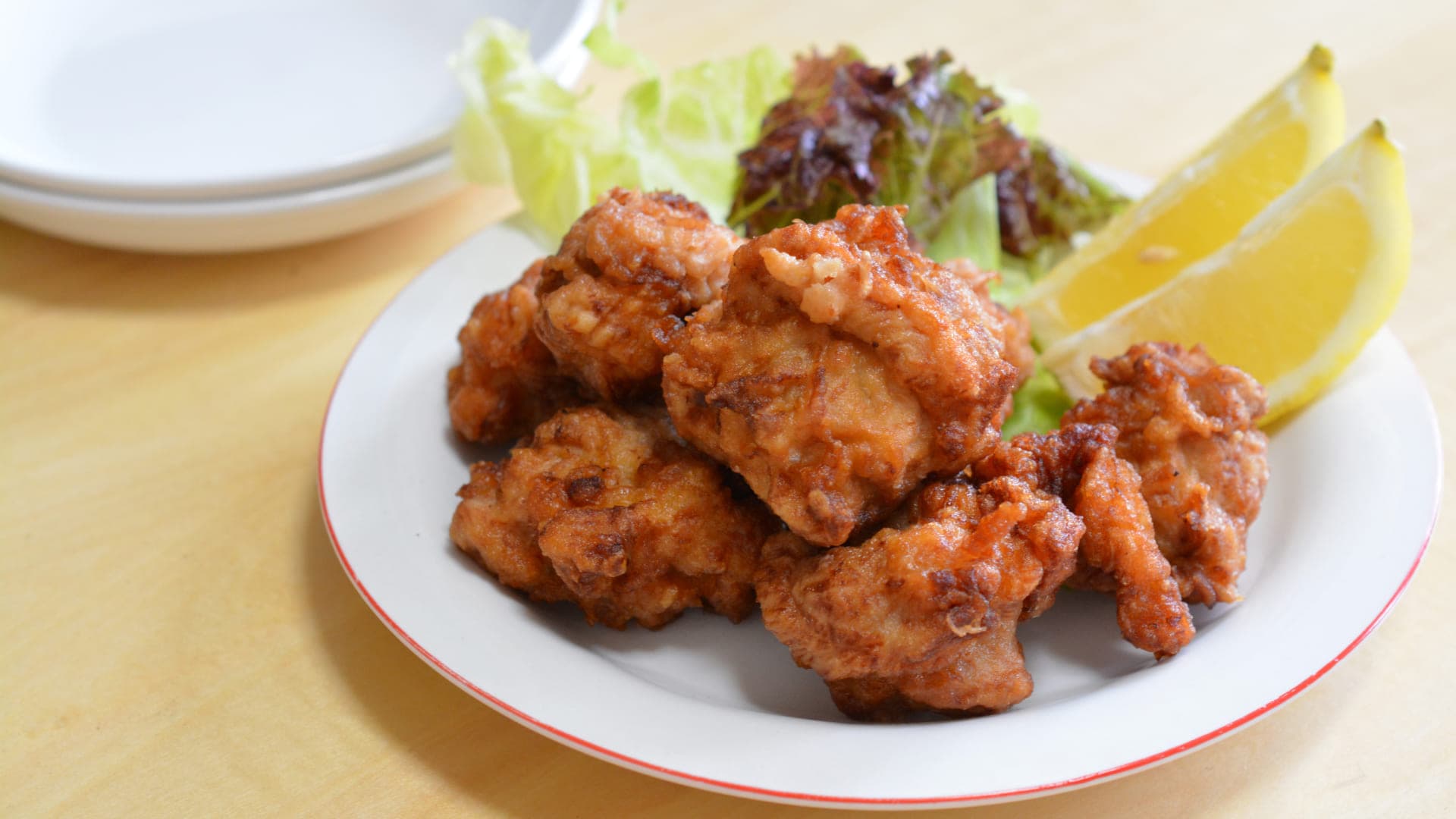
Karaage is a beloved Japanese dish of fried chicken marinated in soy sauce, ginger, and garlic, then coated with potato starch before frying. Known for its crispy exterior and juicy interior, it's traditionally enjoyed with a squeeze of lemon. Different cuts like thigh or breast meat offer varied flavors.
Popular in bento boxes and at izakaya, karaage now comes in various flavors like sweet and spicy sauce, seaweed, or curry. Easy to make at home, it's a favorite across all generations.
Soy-based dishes
Soybeans are one of the most essential ingredients in Japanese food culture, transformed into various traditional foods like tofu, natto, and miso through processing techniques refined over centuries. Known as "meat of the field," soybeans have long supported Japanese health with their high-quality protein.
The versatility of soybean products ranges from simple cold tofu highlighting its natural flavor to simmered fried tofu pouches and fermented natto, making it an indispensable part of Japanese cuisine.
24. Natto
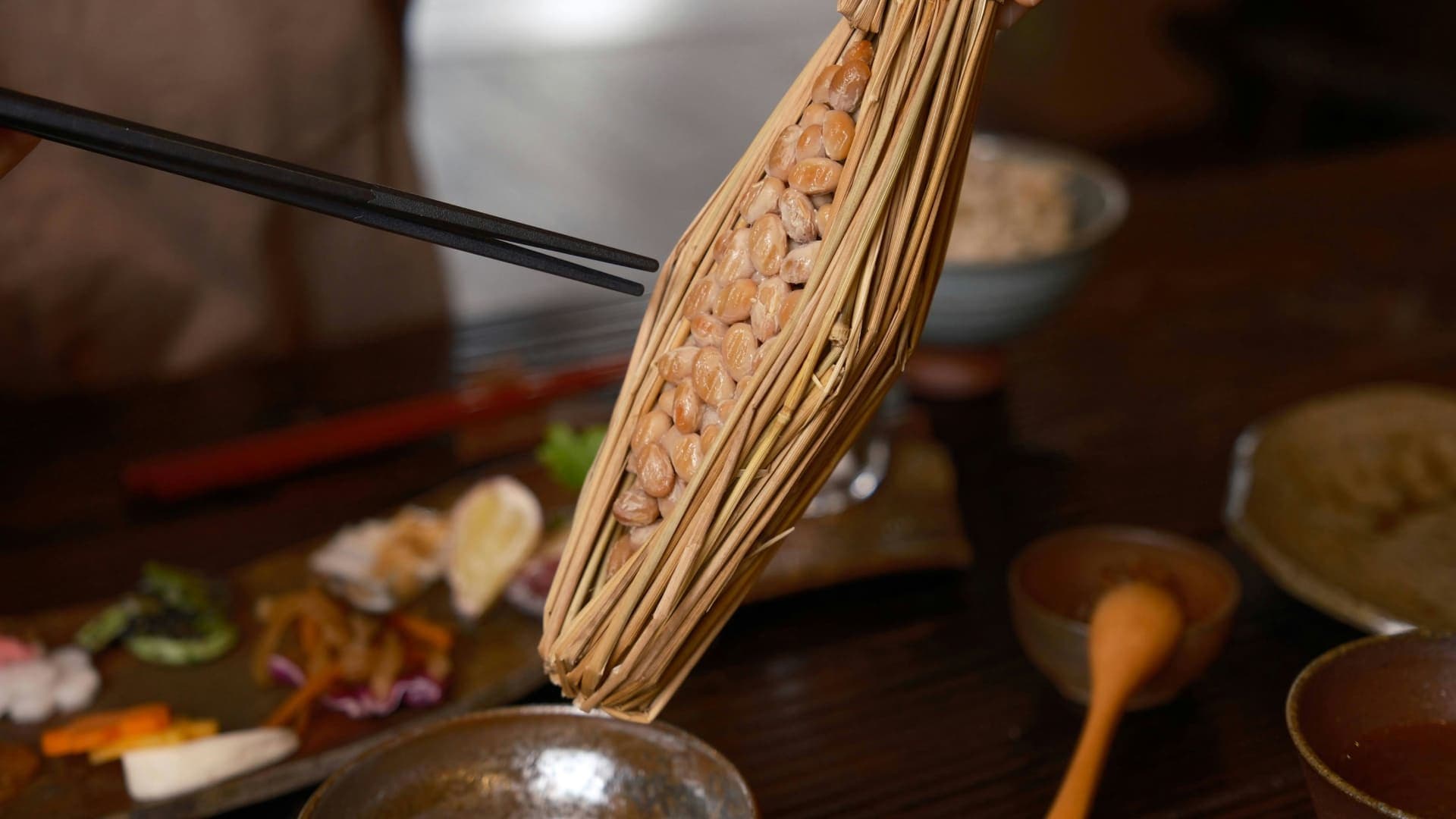
Natto is a traditional Japanese food made by fermenting boiled soybeans with specific bacteria, characterized by its unique stickiness and aroma. Its stringy texture (nebanebaneba) when stirred is known for high nutritional value and health benefits. It's typically eaten over white rice with soy sauce, mustard, and chopped green onions.
Popular mainly in eastern Japan, natto varies by region - small beans preferred in Kanto, larger ones in Hokkaido. While known for its distinctive smell that some find challenging, it's a familiar comfort food for many Japanese people.
25. Tofu
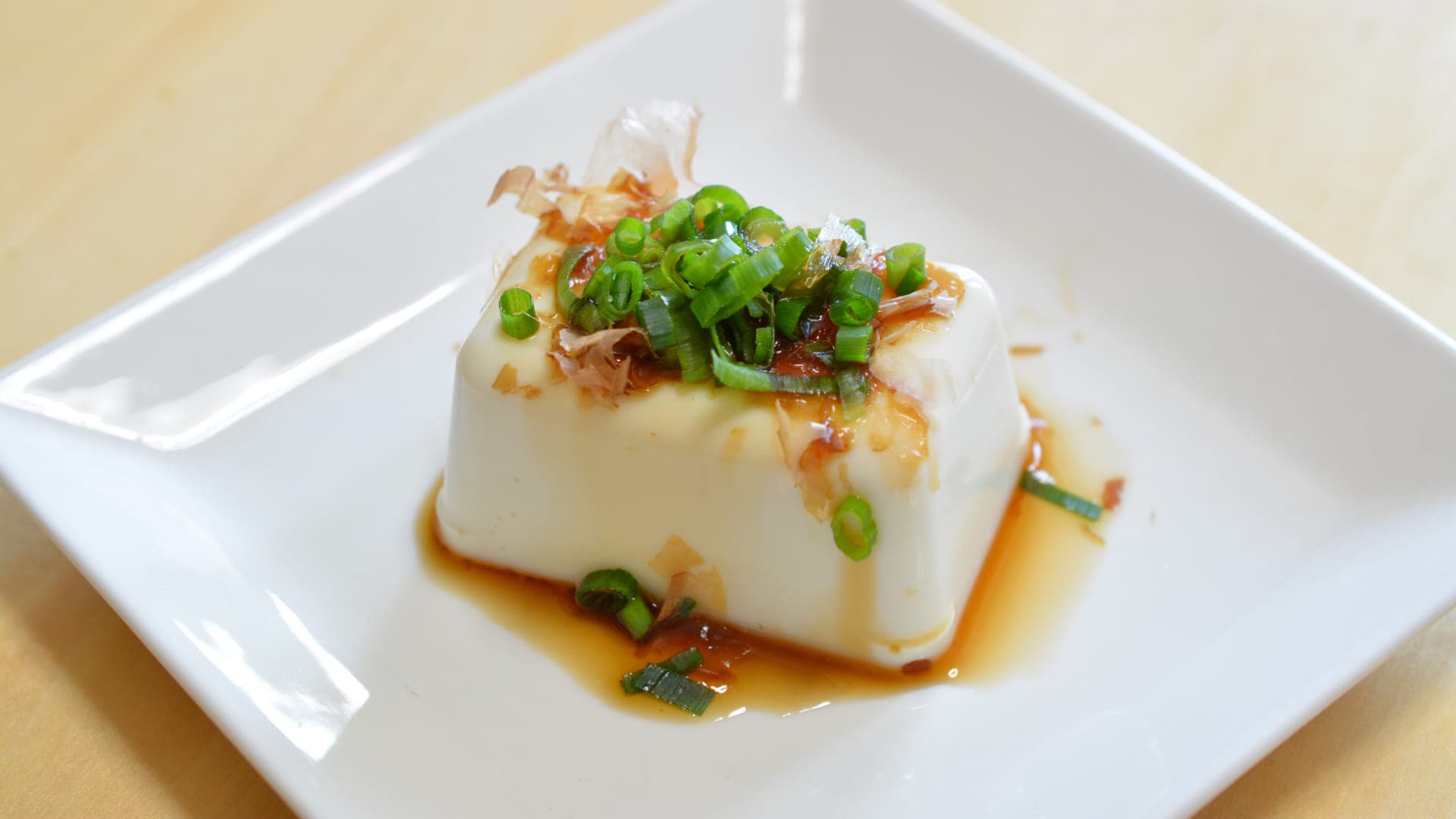
Tofu, prized for its nutritional value, is enjoyed both as a healthy dish and as a companion to alcoholic drinks. Hiyayakko (chilled tofu) is a classic summer dish where silken tofu is served cold with simple condiments.
The smooth texture of tofu is complemented by soy sauce and optional toppings like chopped green onions, ginger, bonito flakes, or shiso leaves. This harmony between tofu's mild flavor and the fresh condiments creates a perfect dish for hot weather.
26. Miso-shiru (Miso soup)
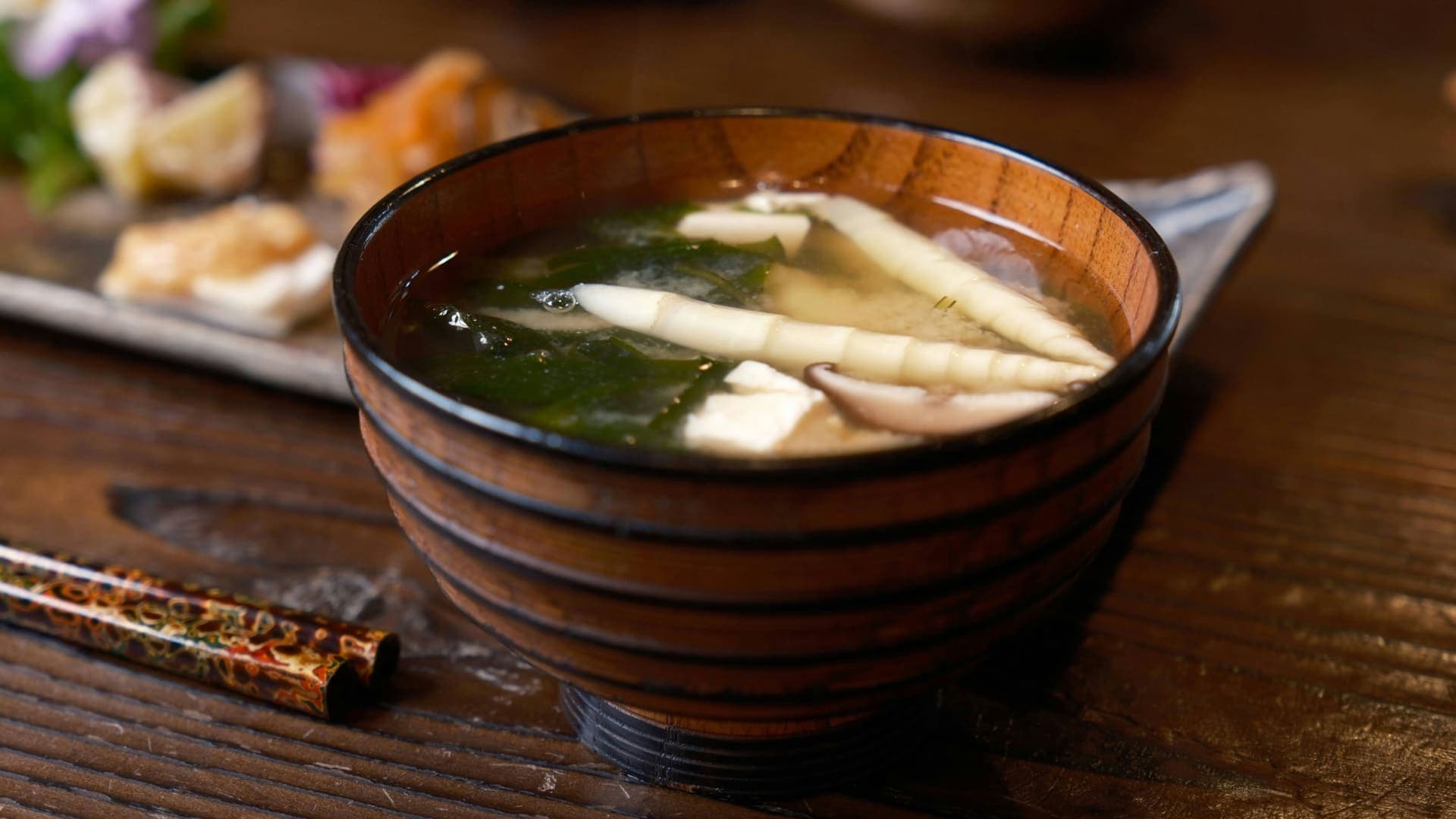
Miso soup is a traditional staple of Japanese dining, made by dissolving fermented soybean paste (miso) in dashi broth, typically made from kombu seaweed and bonito flakes. The soup can include various ingredients such as seasonal vegetables, tofu, wakame seaweed, and fried tofu, varying by region and household. Different types of miso (rice-based, barley-based, or blended) offer distinct regional flavors.
While traditionally served at breakfast, miso soup has gained such popularity that specialty restaurants now exist - definitely worth visiting for miso soup enthusiasts!
27. Inari-zushi
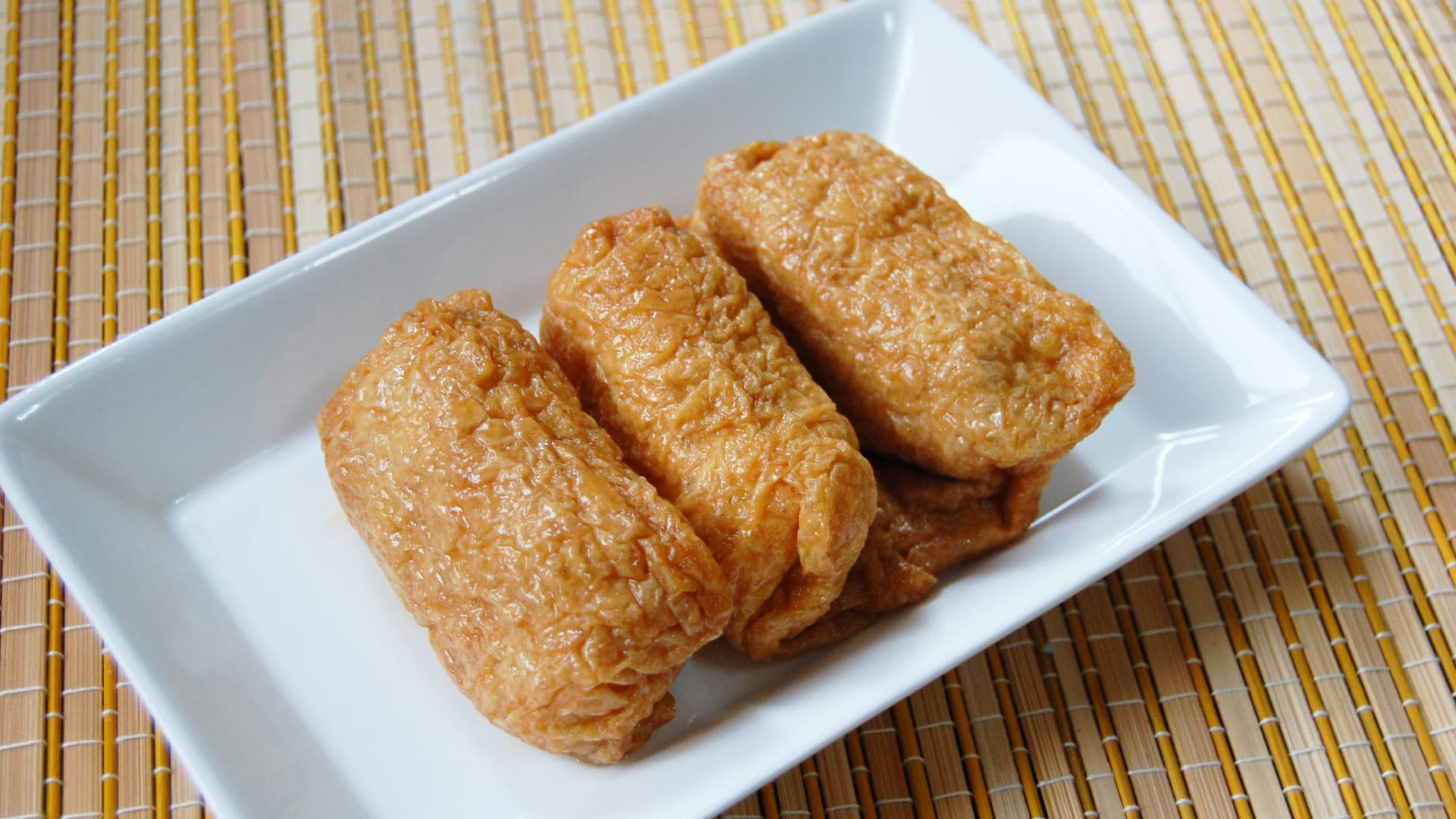
Inari-zushi is a traditional Japanese sushi where sushi rice is stuffed into sweet and savory seasoned deep-fried tofu pouches (aburaage). With its appealing appearance of white rice peeking through light brown pouches and its sweet-salty flavor, it's popular among all ages. It's commonly found at picnics, festivals, and sports events.
Regional variations exist in the size, seasoning, and shape of the pouches - typically square in Kansai and triangular in Kanto. As an accessible form of sushi deeply rooted in Japanese food culture, inari-zushi is readily available at supermarkets and convenience stores across Japan!
28. Yuba
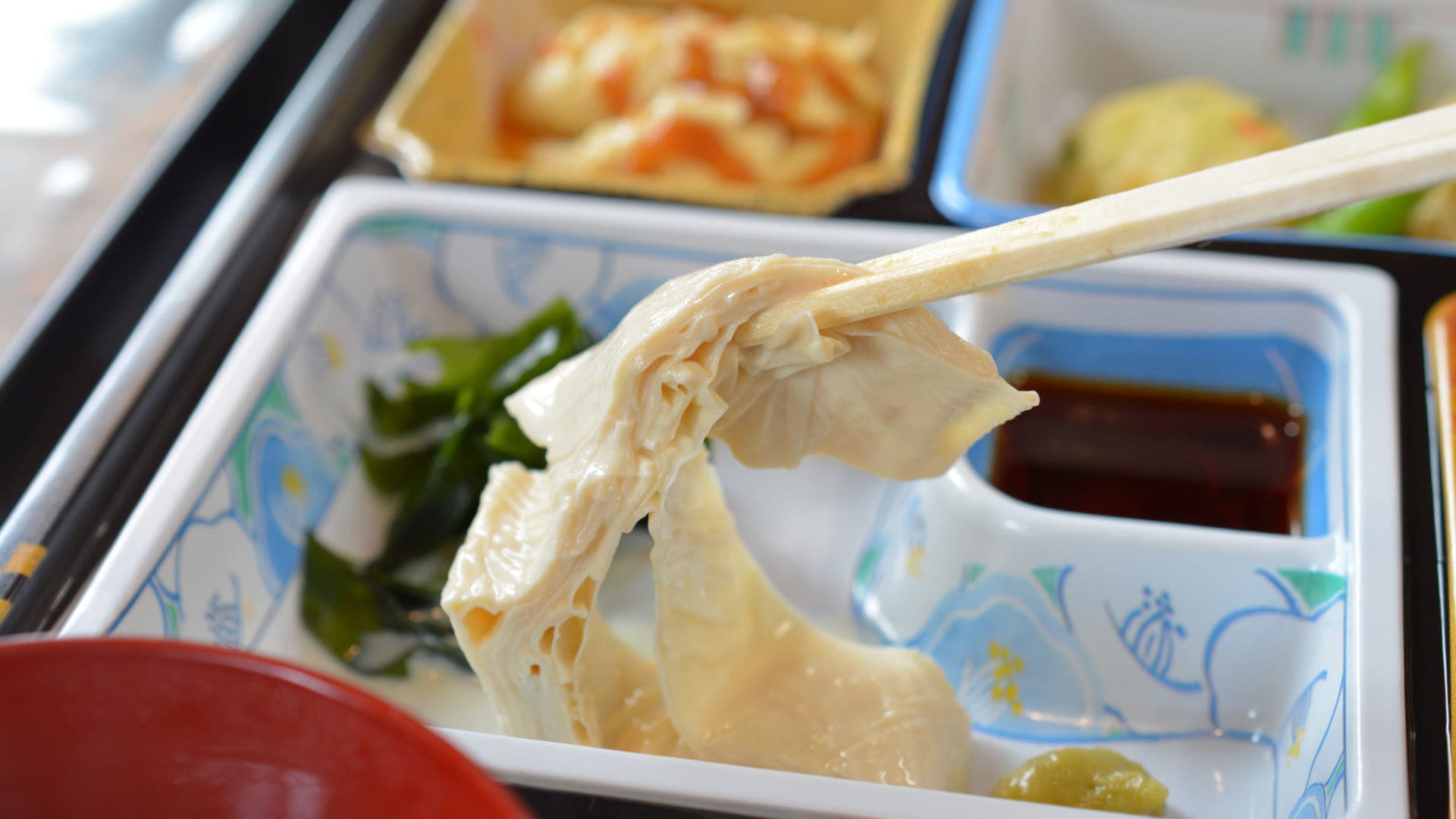
Yuba is a delicate soybean product made by skimming the skin that forms on heated soy milk. It's famously produced in Kyoto and Nikko (Tochigi Prefecture), with slight variations in production methods reflected in their different written characters despite the same pronunciation "yuba."
Rich in protein and nutrients, fresh yuba offers a melt-in-your-mouth texture and natural soybean sweetness, while dried yuba is used in various dishes like dashi-rolled eggs and clear soups. In high-end restaurants, carefully handcrafted yuba is often served as part of seasonal kaiseki courses, celebrated for both its refined taste and elegant appearance.
Hot pot dishes
Hot pot dishes (nabemono) are iconic in Japanese cuisine, traditionally enjoyed by people gathering around a shared pot. This communal dining style, where everyone waits for ingredients to cook and serves themselves, creates important bonding moments among family and friends.
Varieties range from classics like oden, mizutaki, sukiyaki, and shabu-shabu to distinctive styles like chanko nabe (sumo wrestlers' stew) and motsu nabe (offal hot pot). Each region offers its own unique hot pot culture with local ingredients and seasonings. As a warming comfort food, these dishes are especially popular during cold seasons.
29. Oden
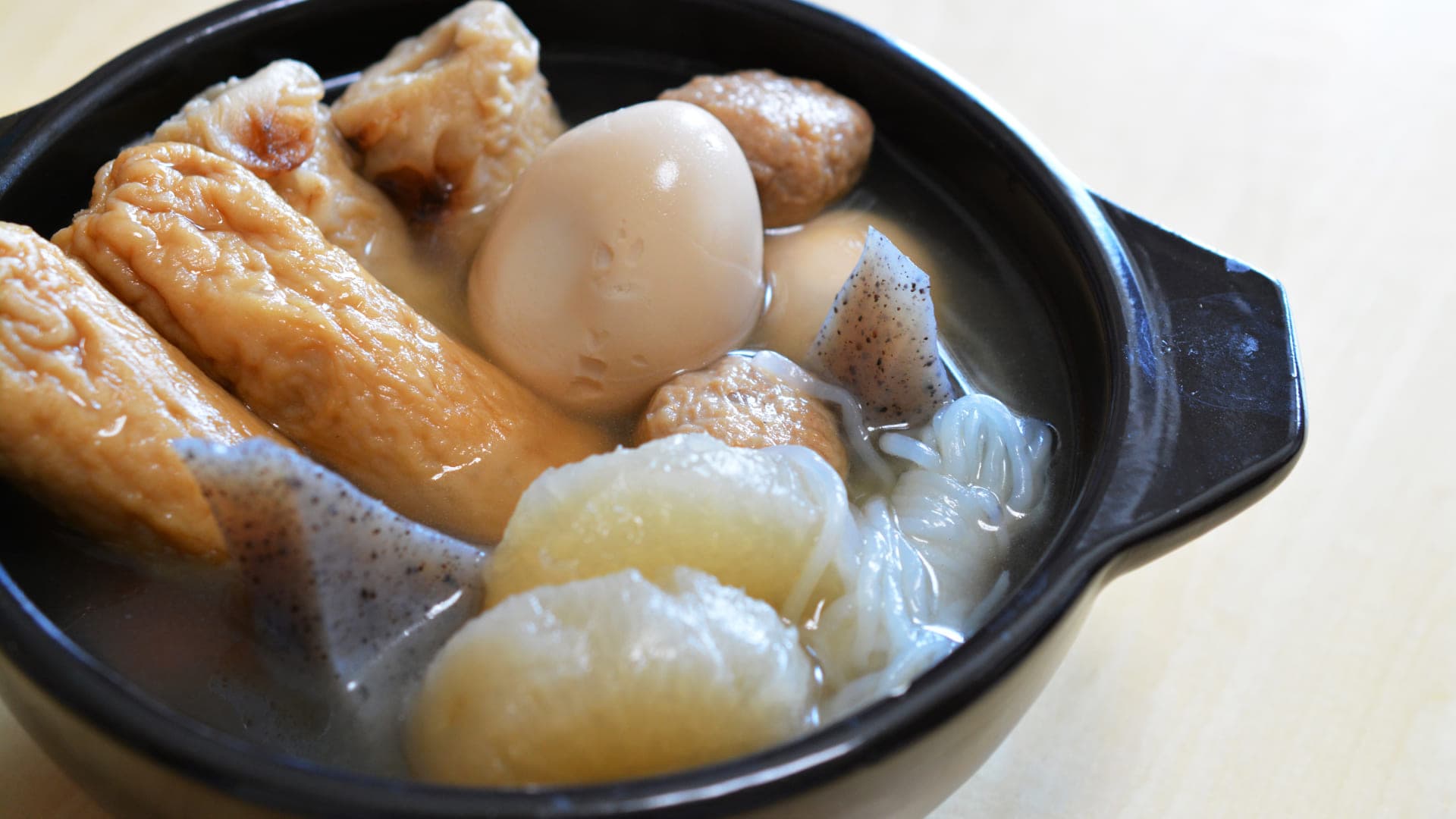
Oden is a classic winter hot pot dish where various ingredients are simmered in a light dashi broth made from kombu seaweed and bonito flakes. The diverse ingredients include daikon radish, konnyaku (konjac), eggs, fish cakes, fried tofu patties, and kelp rolls. The long simmering process allows the dashi to thoroughly infuse while enhancing each ingredient's natural flavors.
In Japan, oden is readily available year-round at convenience stores. At homes and izakaya, it's traditionally enjoyed by selecting hot pieces from the pot and eating them with mustard.
30. Chanko-nabe
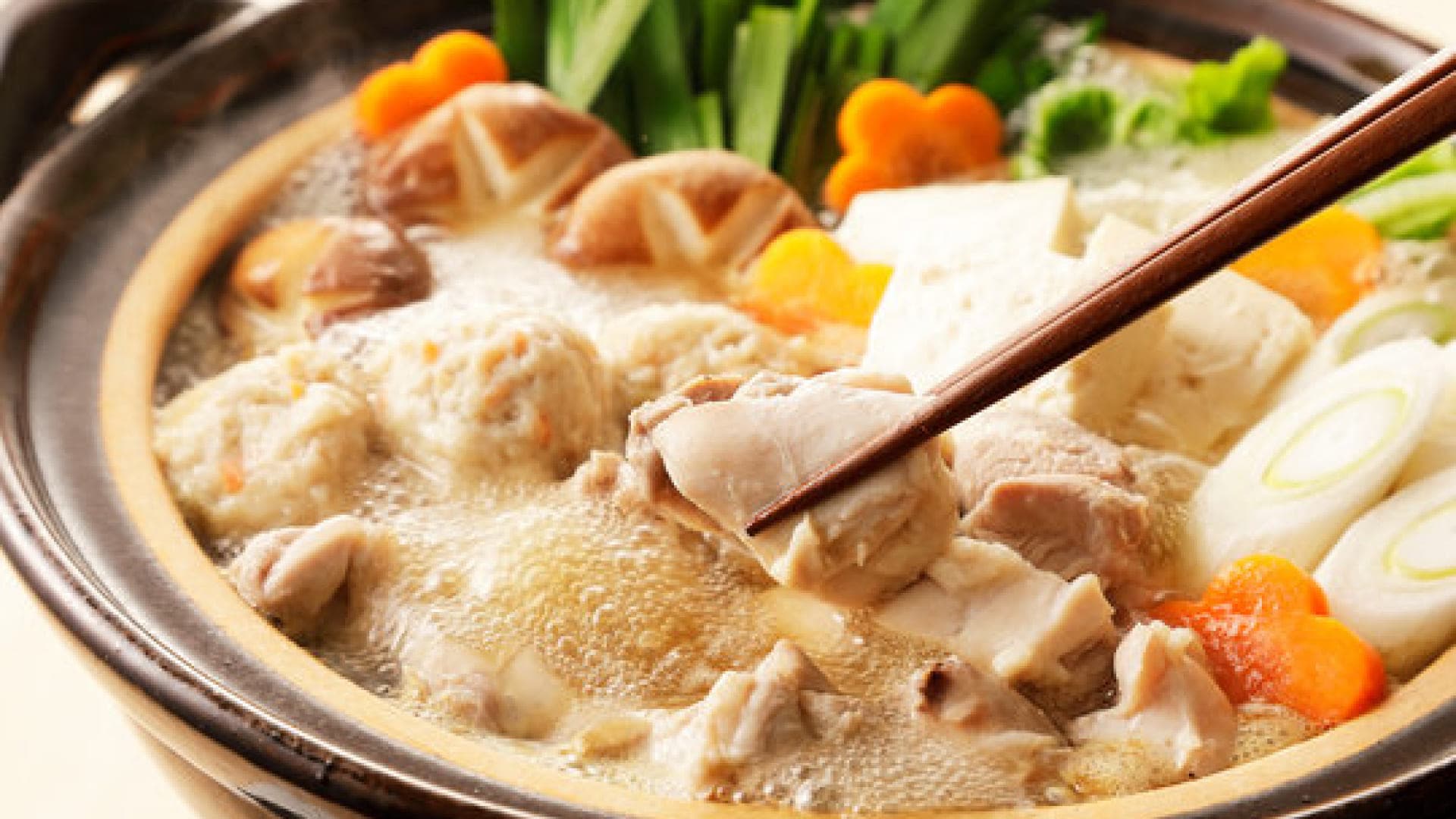
Chanko nabe is a hearty hot pot dish closely associated with sumo wrestling, Japan's national sport. Originally developed as a nutritious meal for sumo wrestlers' training, it has now become widely popular among the general public.
The dish features abundant chicken, seafood, and vegetables simmered in a dashi-based soup. Each sumo stable has its own style, with variations in seasoning (soy sauce, salt, or miso) and ingredients. Many chanko restaurants are run by former sumo wrestlers or frequently visited by active ones, offering authentic atmosphere and flavors (you might even spot a sumo wrestler if you're lucky!).
31. Yose-nabe
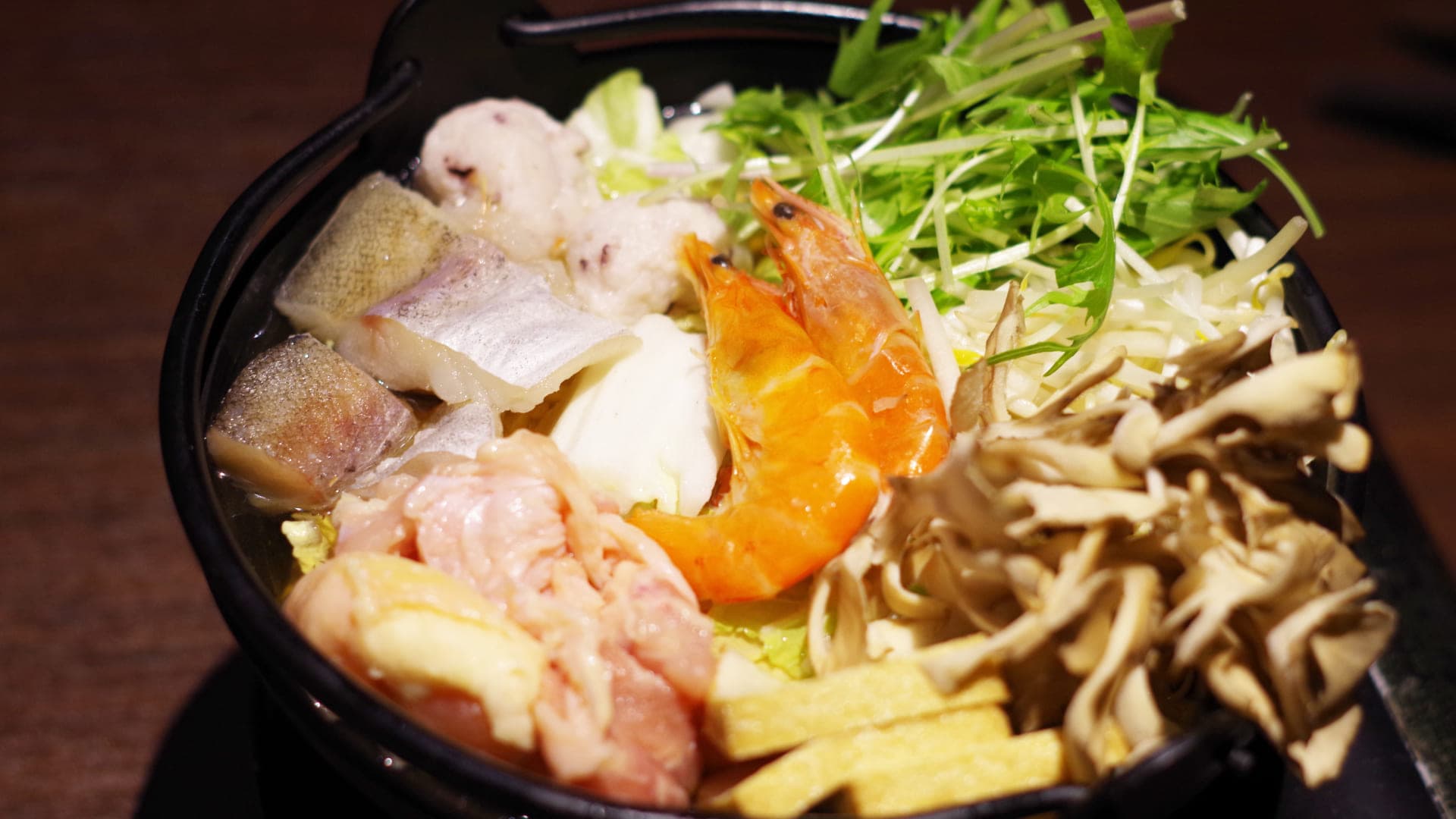
Yose-nabe, meaning "gathered ingredients in a pot," is a classic Japanese hot pot dish where various seafood and vegetables are simmered in kombu and bonito dashi broth. It typically includes white fish, shrimp, clams, along with vegetables like Chinese cabbage, mushrooms, tofu, and chrysanthemum greens.
The flavorful broth, enriched by the ingredients, is traditionally finished by adding rice to make porridge (zosui) or udon noodles. As an easily prepared hot pot dish enjoyed at both homes and izakaya, it's an essential part of winter dining in Japan.
32. Mizutaki-nabe
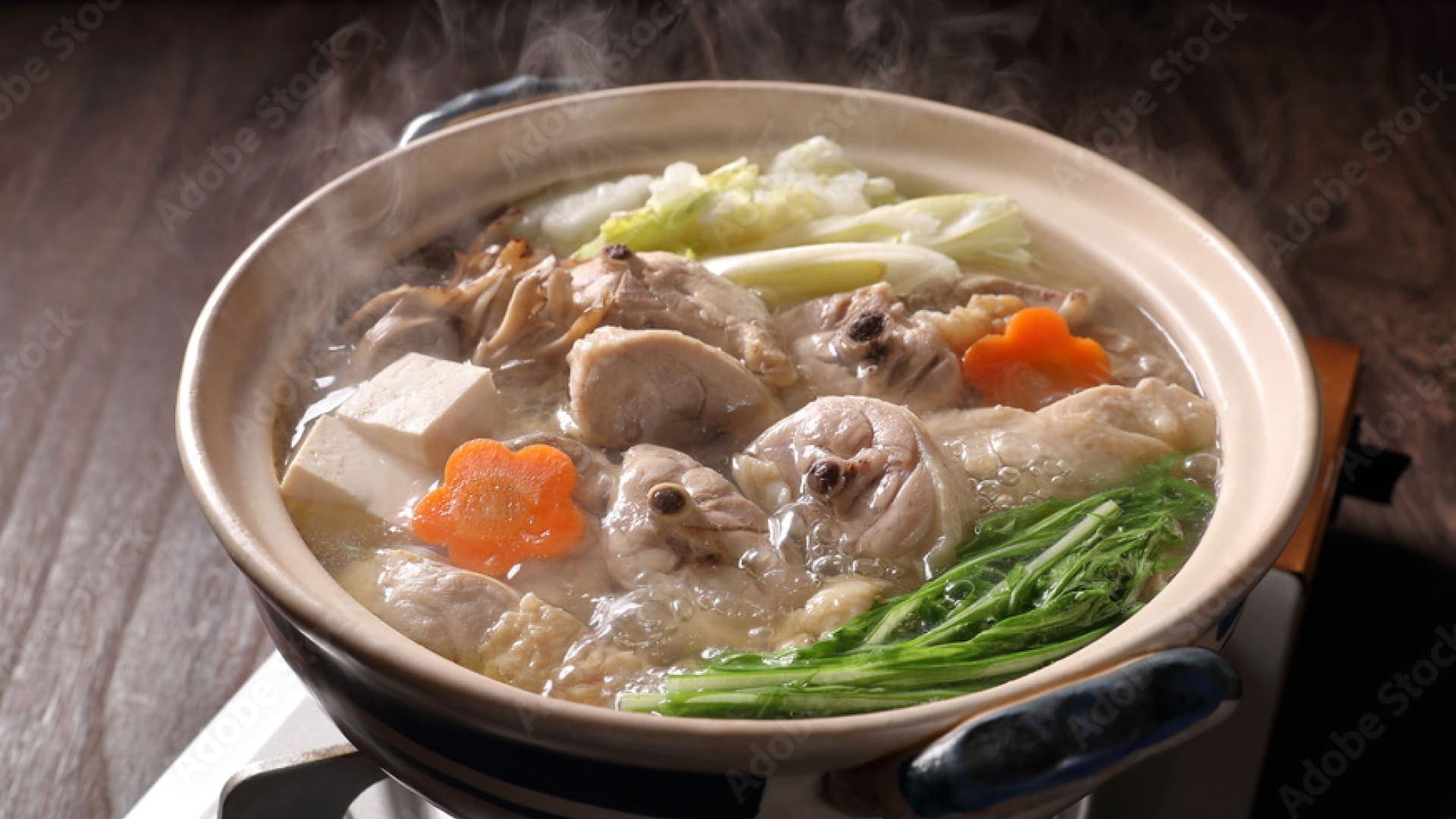
Mizutaki is an elegant hot pot dish originating from Fukuoka, featuring chicken and vegetables cooked in a clear, milky broth. With fresh chicken as the star ingredient, it's prepared with vegetables like Chinese cabbage, chrysanthemum greens, and mushrooms in a simple salt-based soup.
As the cooking progresses, the chicken's umami enriches the broth. It's typically enjoyed with condiments like ponzu sauce and yuzu-kosho (citrus chili paste), ending with a rice porridge (zosui) made from the remaining soup. This sophisticated dish truly celebrates the natural flavors of its ingredients.
33. Motsu-nabe
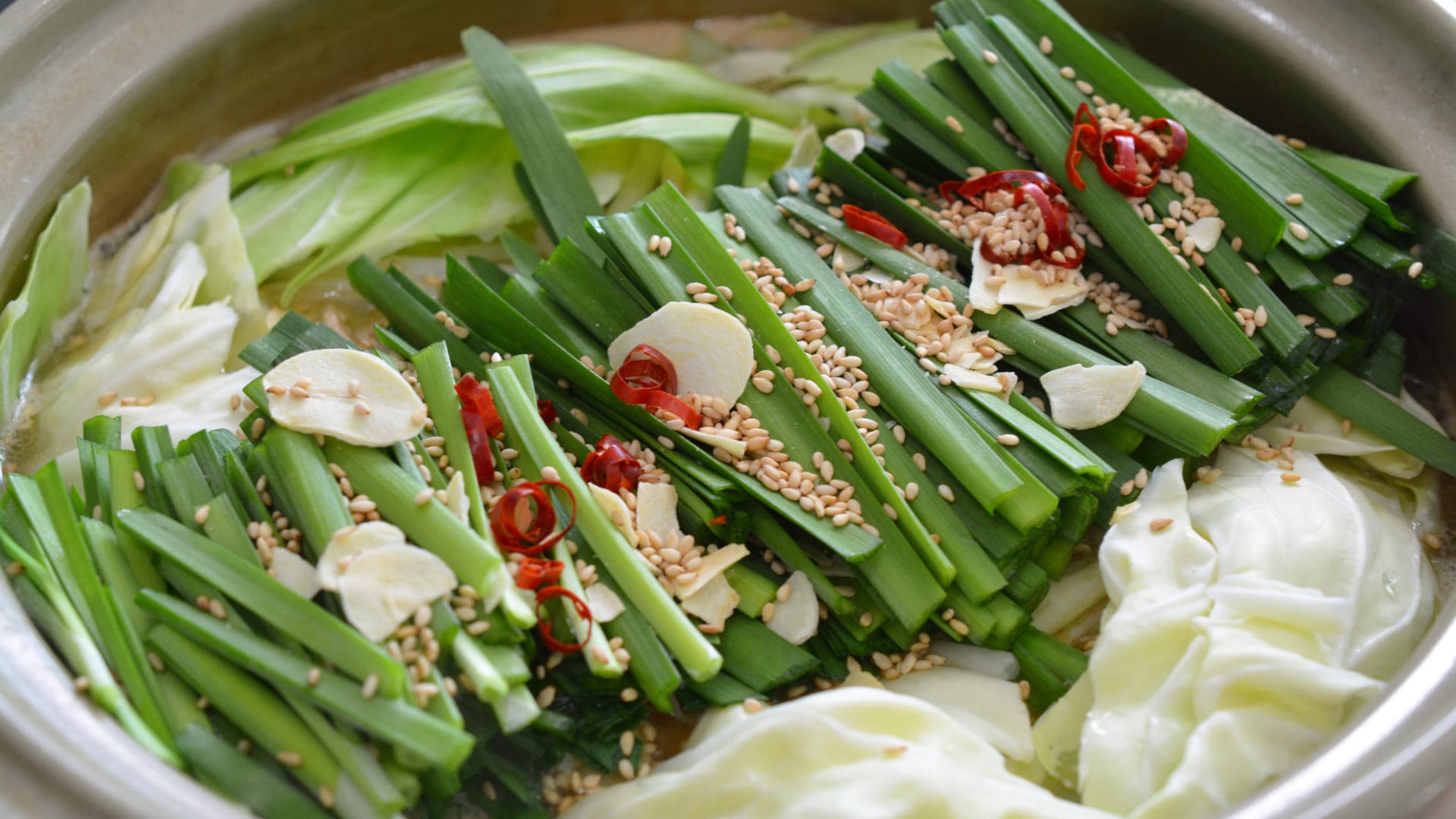
Motsu-nabe, originating from Fukuoka, is a hot pot dish featuring beef offal and vegetables cooked in a spicy miso or soy sauce-based soup. Fresh offal, rich in collagen, offers a springy texture and deep umami, while vegetables like cabbage, Chinese chives, and burdock root complete the dish. The soup, flavored with garlic and chili peppers, pairs perfectly with the ingredients, typically finished with champon noodles or rice porridge.
Originally a humble regional dish, motsu nabe has evolved into a popular delicacy enjoyed throughout Japan.
Regional variations of hot pot
As a special note: Just like chanko nabe originated in Tokyo and both mizutaki and motsu nabe came from Fukuoka, Japan has numerous regional hot pot specialties born from local ingredients and food culture. While traveling in Japan, you might enjoy discovering and tasting hot pot dishes unique to each region you visit.
Let's introduce some of Japan's famous regional hot pot specialties!
◼︎Kiritanpo-Nabe (Akita Prefecture)
A signature dish of Akita Prefecture featuring kiritanpo (grilled rice sticks), chicken, and vegetables in a rich broth made from Hinai-jidori chicken. Local ingredients like burdock root, maitake mushrooms, water dropwort, and green onions create this hearty dish that helps locals through cold winters.
◼︎Imoni-Nabe (Yamagata Prefecture)
This autumn specialty combines taro, beef, konnyaku, and green onions in soy sauce-based broth. Traditionally enjoyed at riverside gatherings (imoni-kai) during harvest season. Regional variations exist - Yamagata City prefers beef with soy sauce, while Yonezawa uses pork with miso.
◼︎Anko-Nabe (Ibaraki Prefecture)
A winter delicacy featuring anglerfish in a miso-based soup enriched with its liver. Known as "dobu-jiru," this humble-looking dish offers rich, deep flavors. Especially popular around Oarai Port, Japan's largest anglerfish landing site.
◼︎Dojō-Nabe (Tokyo)
A traditional Edo-period dish of loach simmered with green onions and mitsuba in soy sauce-based broth. Once common in downtown Tokyo, this nutritious dish is now rare, found only in specialty restaurants.
◼︎Tecchiri-Nabe (Osaka Prefecture)
A luxury hot pot featuring carefully prepared fugu (blowfish). (The name “teppou” is derived from the old name for blowfish, “teppou” meaning “pistol”. The name “Teppou” is a combination of “hit by a bullet” and “food poisoning”... “If it hits you, you will go to the other side”. I think it's a great sense of naming, even though I am Japanese.)
Fresh blowfish, whose poisonous parts have been securely removed, is carefully stewed in kelp broth and served with ponzu (Japanese sauce made from ponzu citrus juice). In the Kansai region, it is known as a luxurious winter dish in which various parts of the pufferfish, such as the milt, skin, and fillet, can be fully appreciated.
Alcoholic beverages
Japanese alcoholic beverages are globally acclaimed for their diverse brewing methods and flavors. Sake, the traditional national alcohol made from rice and water, is celebrated worldwide for its delicate taste and complexity. Shochu (distilled spirits from barley or sweet potatoes) and Japanese whiskey have evolved uniquely, earning international recognition. Japanese beer makers are known for their consistent quality and innovative product development.
These beverages pair excellently with Japanese cuisine, enhancing the dining experience. Be sure to try them when visiting Japan!
34. Sake
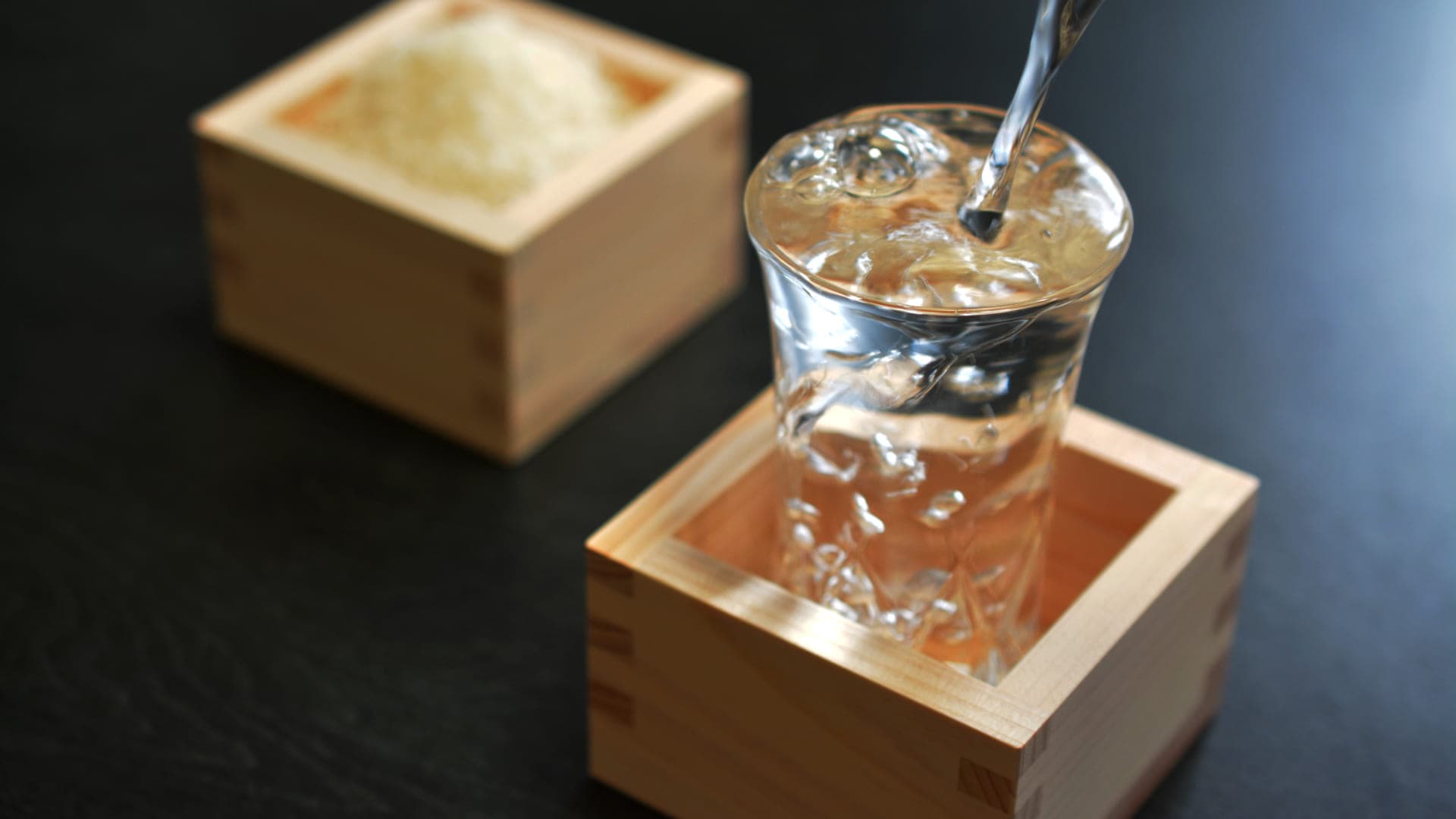
Sake (called "Nihon-shu") is a traditional Japanese alcoholic beverage brewed from rice and water, crafted by skilled artisans called toji (master brewers). With many enthusiasts worldwide, sake reflects the climate and culture of its production regions, resulting in distinct local flavors.
The varieties are extensive, ranging from dry to sweet, fruity daiginjo to rich junmai sake. It can be enjoyed at different temperatures - chilled, room temperature, or warm (kanzake) - each offering unique taste experiences. Sake pairs exceptionally well with Japanese cuisine, particularly complementing delicate dishes like sashimi and grilled fish.
35. Beer

Beer is one of Japan's most popular alcoholic beverages, with Japanese brewers known for their high quality and technical expertise. Japanese draft beer is particularly acclaimed worldwide for its beautiful foam quality. Options range from traditional draft beer to low-malt beer and "new genre" beverages, all readily available at supermarkets and convenience stores.
While beer pairs well with any dish, it's especially popular enjoyed as cold draft beer with yakitori and edamame. Recently, distinctive craft beers have gained attention, further diversifying Japan's beer culture.
36. Shochu

Shochu is a Japanese distilled spirit that developed primarily in the Kyushu region. Its distinct flavors vary greatly depending on the base ingredient - sweet potato, barley, rice, buckwheat, or brown sugar - reflecting each region's climate and culture.
Sweet potato shochu, particularly famous in Kagoshima Prefecture, is popular for its distinctive aroma. It can be enjoyed in various ways: on the rocks, with cold or hot water, or mixed with tea. Recently, it's gained attention as a base for highballs and cocktails. Despite its relatively high alcohol content, shochu offers a clean finish and pairs excellently with Japanese cuisine.
37. Whisky
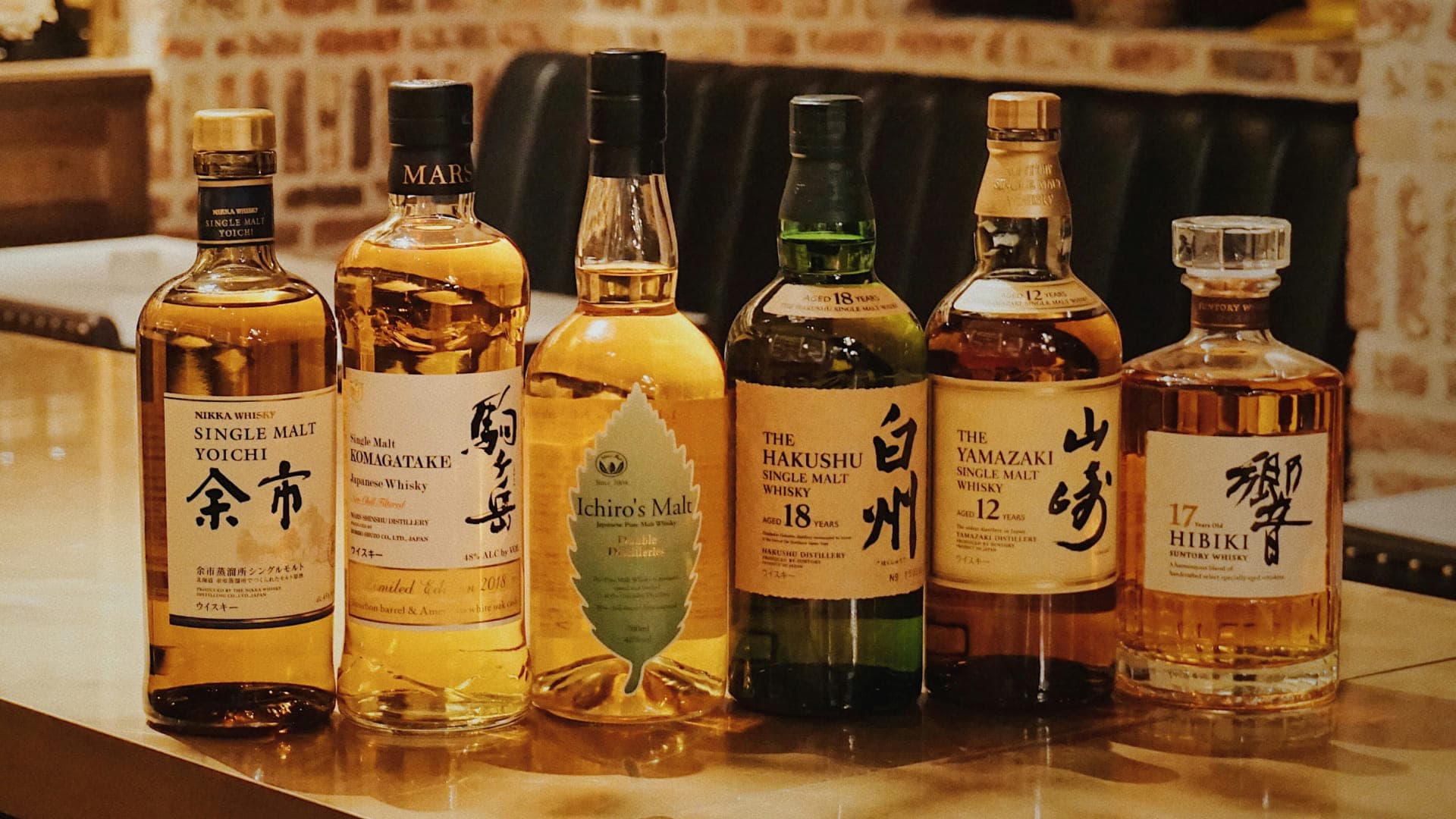
Japanese whisky, while based on Scotch-making methods, has established its own distinct character and gained global recognition. The combination of quality water, four-season climate, and expert craftsmanship creates delicate, balanced flavors.
Brands like Hibiki, Yamazaki, and Hakushu have won numerous international awards. (Note: Due to the Japanese whisky boom and material shortages, some brands have become expensive and rare.) While enjoyed straight, on the rocks, or with water, the whisky highball has become particularly essential to Japan's izakaya drinking culture.
Wagashi (traditional Japanese sweets)
Wagashi (traditional Japanese sweets) have evolved as a unique culinary art form celebrating seasonal ingredients and delicate craftsmanship. Made with natural ingredients like mochi rice, red beans, and agar, they're characterized by subtle sweetness and refined taste.
Daifuku, ohagi, dango, and dorayaki are everyday favorites, while traditional sweets like anmitsu and yokan are special treats enjoyed during tea time. Each wagashi's design and name often reflects seasonal themes and Japanese aesthetics, making them beautiful both in appearance and taste.
Wagashi make excellent souvenirs from Japan - just be sure to check expiration dates as many have short shelf lives. We encourage you to discover your favorite varieties!
38. Daifuku
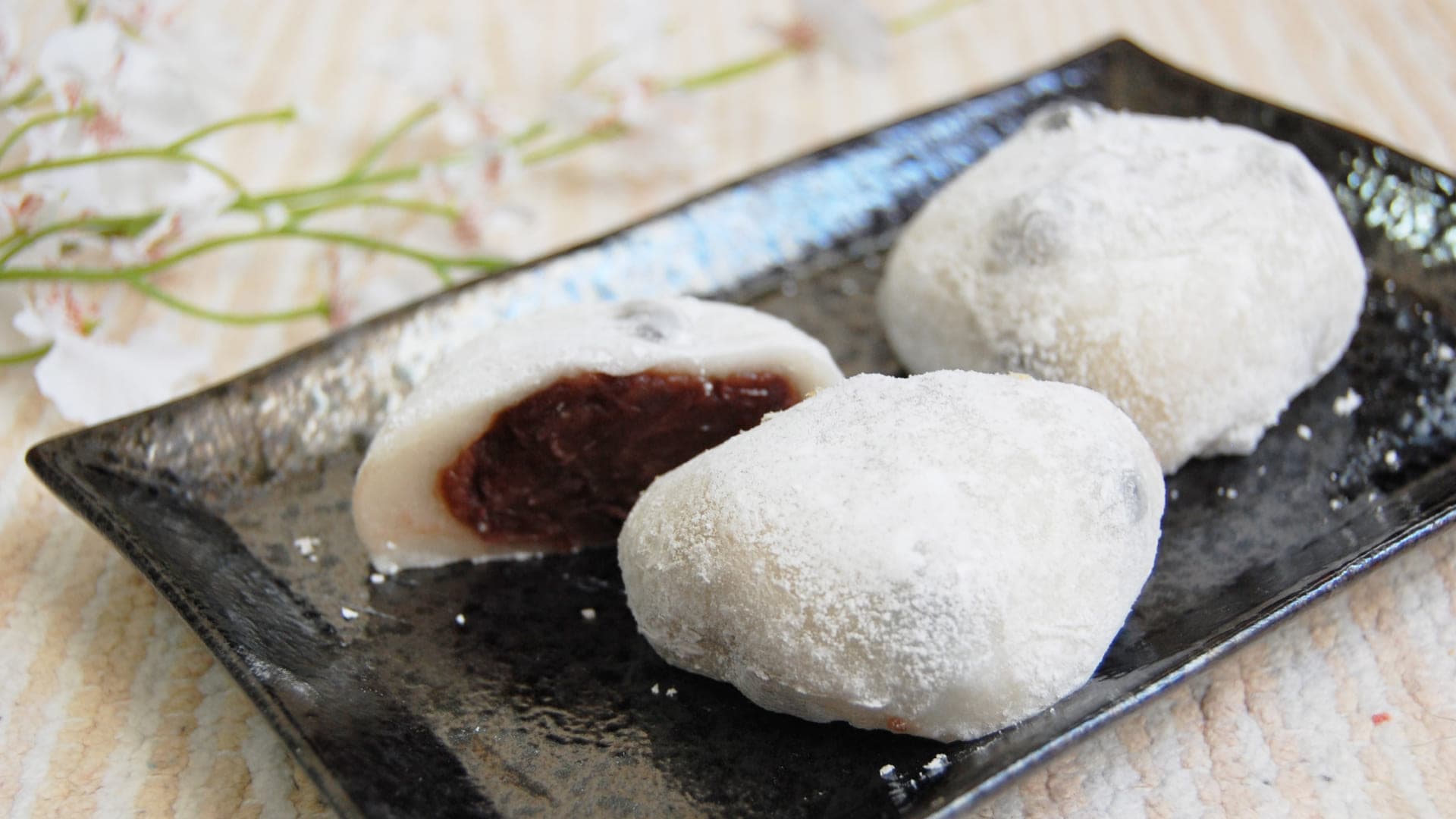
Daifuku is a classic Japanese sweet made of soft rice cake (mochi) wrapped around sweet bean paste (anko). Its chewy white exterior combined with sweet red bean filling has captured the hearts of people worldwide.
While traditional daifuku contains red bean paste, the strawberry version (ichigo daifuku) is especially popular as a spring seasonal treat. Modern variations include matcha, chestnut, and custard fillings, showcasing how this traditional sweet continues to evolve while maintaining its heritage.
39. Ohagi
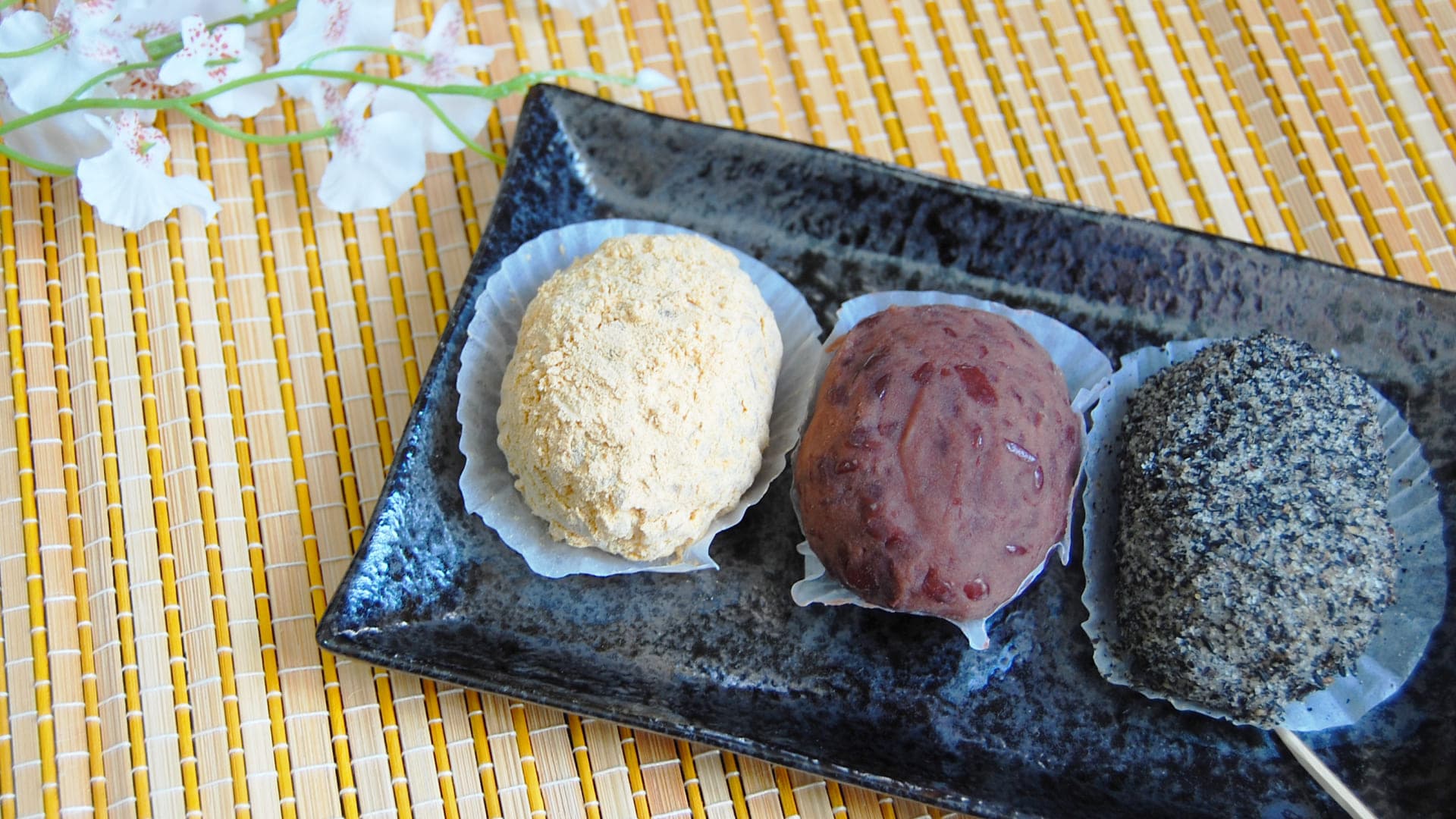
Ohagi is a nostalgic Japanese sweet made of mashed sticky rice covered with sweet bean paste. It's called botamochi in spring (named after peony flowers) and ohagi in autumn (named after bush clover), reflecting seasonal changes.
While traditionally covered with smooth or coarse sweet bean paste, variations include kinako (soybean flour) and black sesame coatings. It's commonly homemade during the spring and autumn equinox periods (Ohigan), when families share them as part of traditional celebrations.
40. Dango
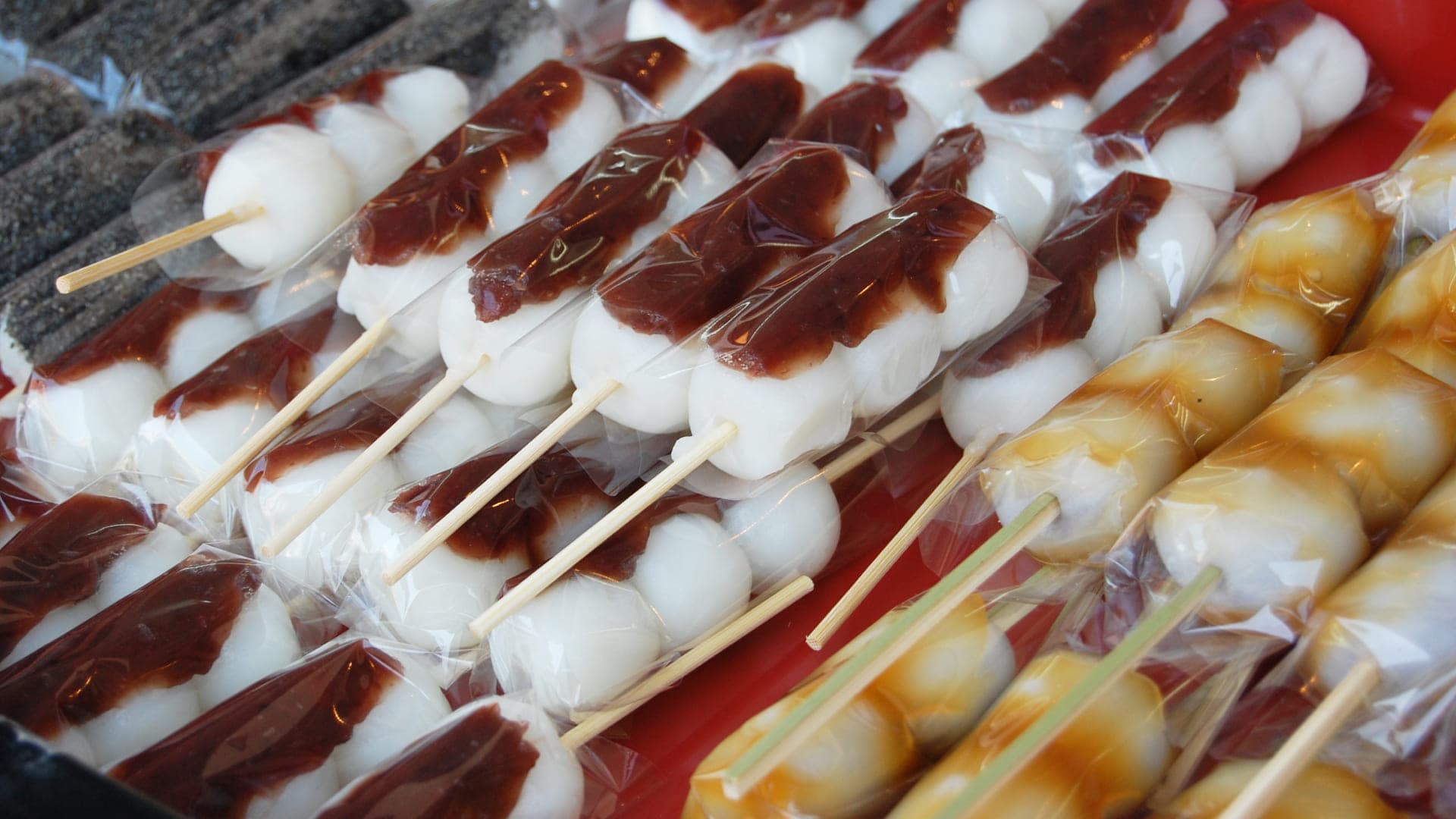
Dango is a traditional Japanese sweet made from pounded rice flour, shaped into small balls and boiled. Typically served with 3-5 balls on a skewer, it comes in various styles: mitarashi dango with sweet soy sauce glaze, kushi dango with sugar-soy sauce, and kinako dango coated with soybean flour. Seasonal varieties include sakura dango wrapped in cherry leaves in spring and tsukimi dango for autumn moon viewing.
Popular at both traditional tea houses and festival stalls, dango is enjoyed by people of all ages.
41. Dorayaki
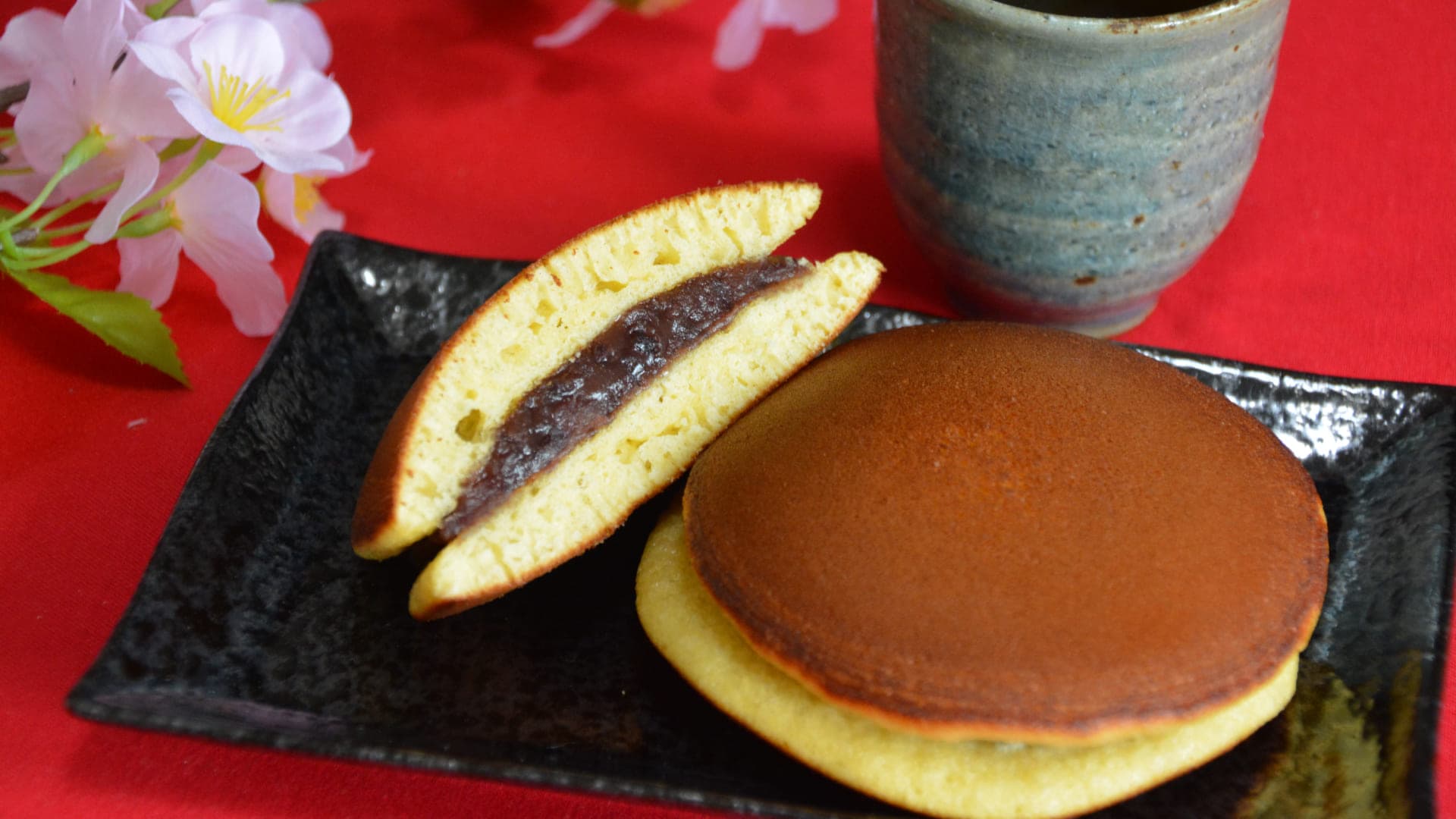
Dorayaki is a classic Japanese sweet consisting of sweet red bean paste sandwiched between two fluffy pancake-like castella layers. The name comes from its resemblance to a gong (dora). The harmony between the fragrant grilled outer layers and the refined sweetness of the bean paste has made it so popular that many specialty shops exist.
Modern variations feature fillings like matcha cream, custard, and chocolate. With its relatively long shelf life, dorayaki makes a perfect souvenir and is loved by both children and adults.
42. Manjū
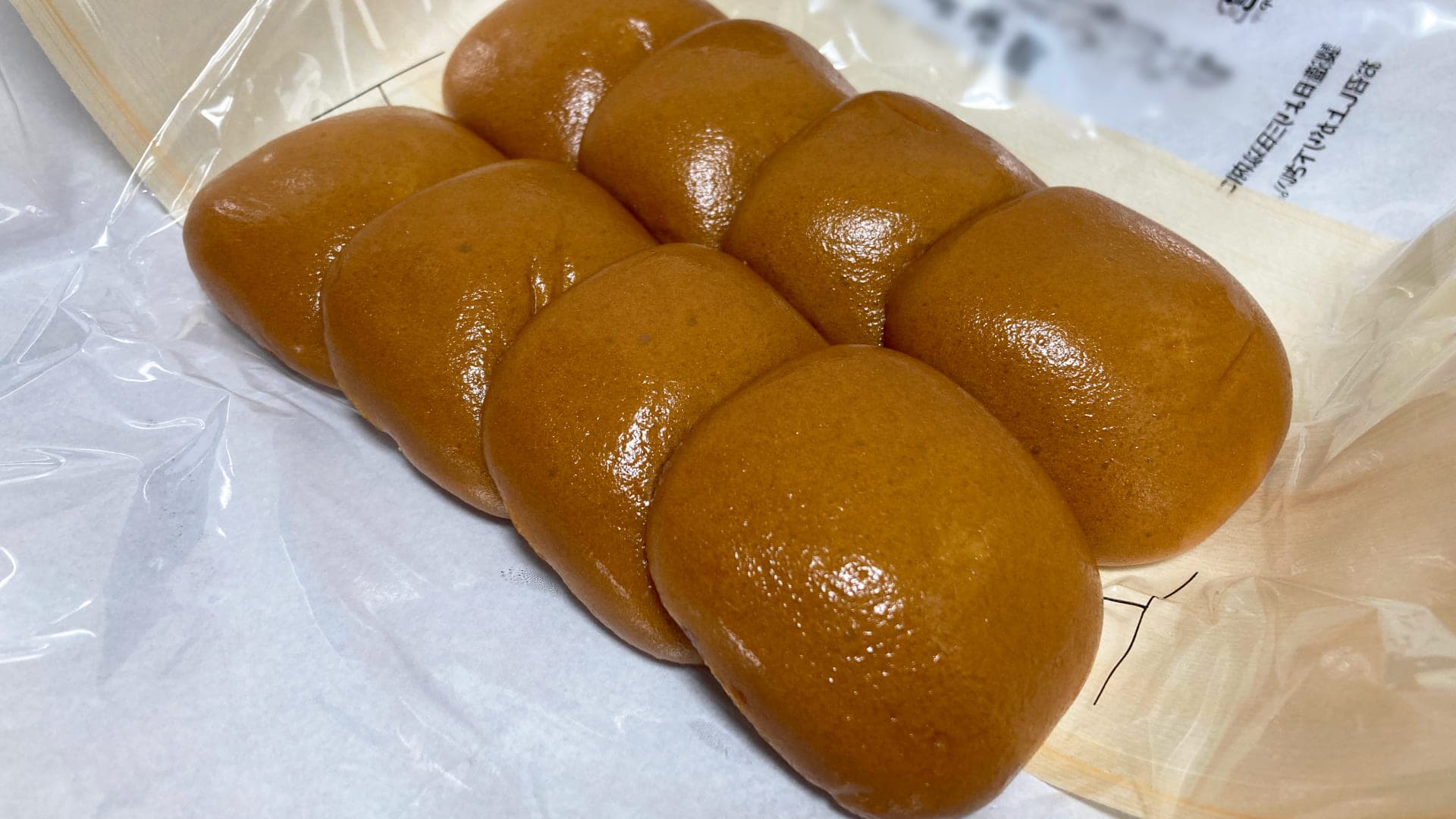
Manjū is a traditional Japanese confection made by wrapping sweet bean paste in wheat flour dough and steaming it. The perfect balance between the moist outer layer and sweet bean filling has made it a beloved treat. Regional varieties are popular local specialties, such as Nagasaki manjū, Mito's ume (plum) manjū, and Ueno's kusa (grass) manjū.
Best enjoyed fresh when the texture is soft and moist from established tea houses or traditional confectionery shops, as it becomes slightly firmer when cool. Many varieties have good shelf life, making them popular as souvenirs.
43. Anmitsu
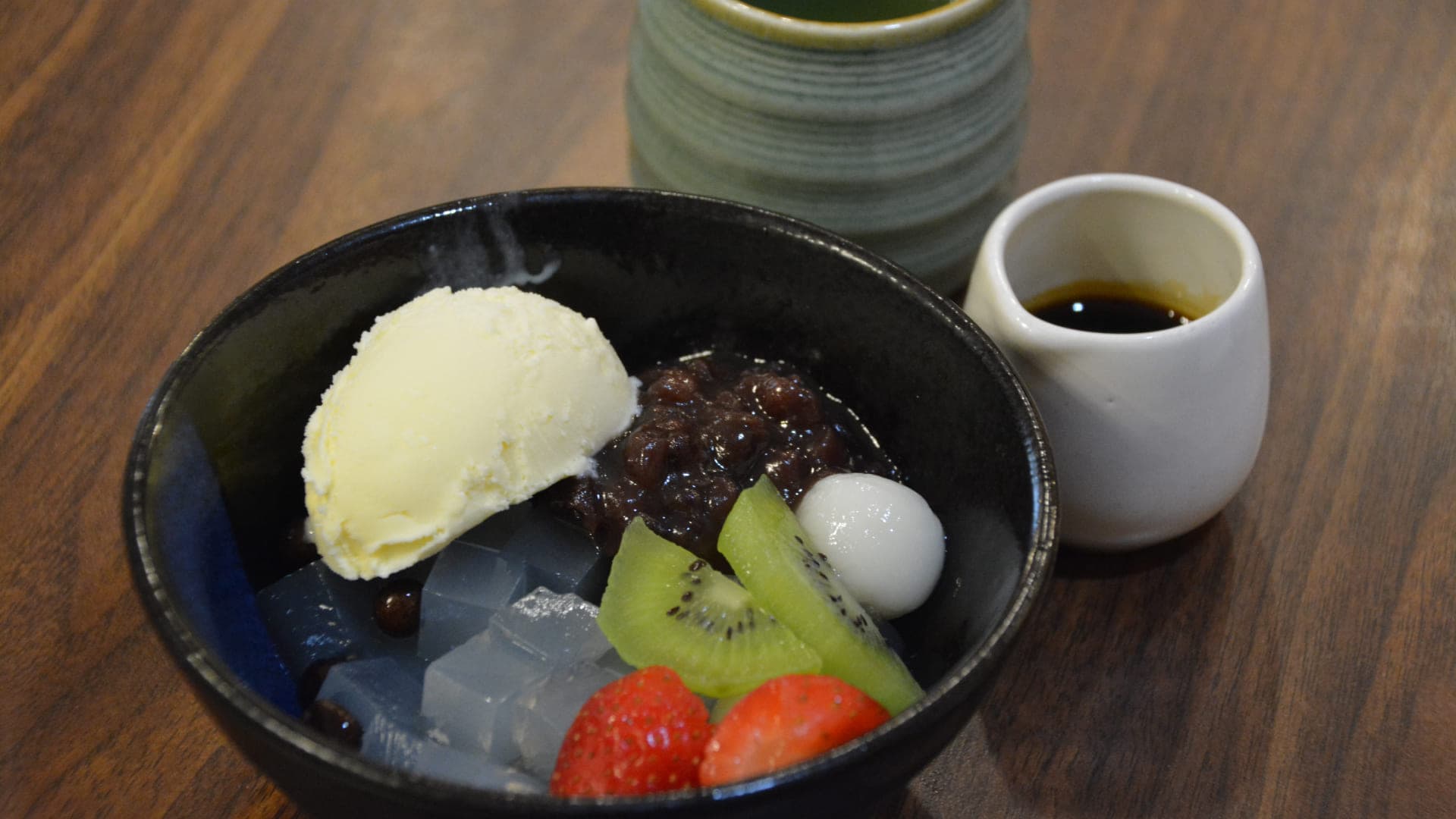
Anmitsu is a traditional Japanese dessert featuring clear cubes of agar jelly served with sweet red bean paste, mochi balls, seasonal fruits, and often matcha ice cream. It's typically enjoyed with black sugar syrup (kuromitsu) served on the side, creating a perfect balance of textures and sweetness.
Particularly popular in warm weather, its refreshing appearance and smooth jelly texture, combined with colorful toppings, make it a favorite summer treat. Best enjoyed at traditional Japanese confectionery shops where you can experience the authentic atmosphere.
44. Yōkan
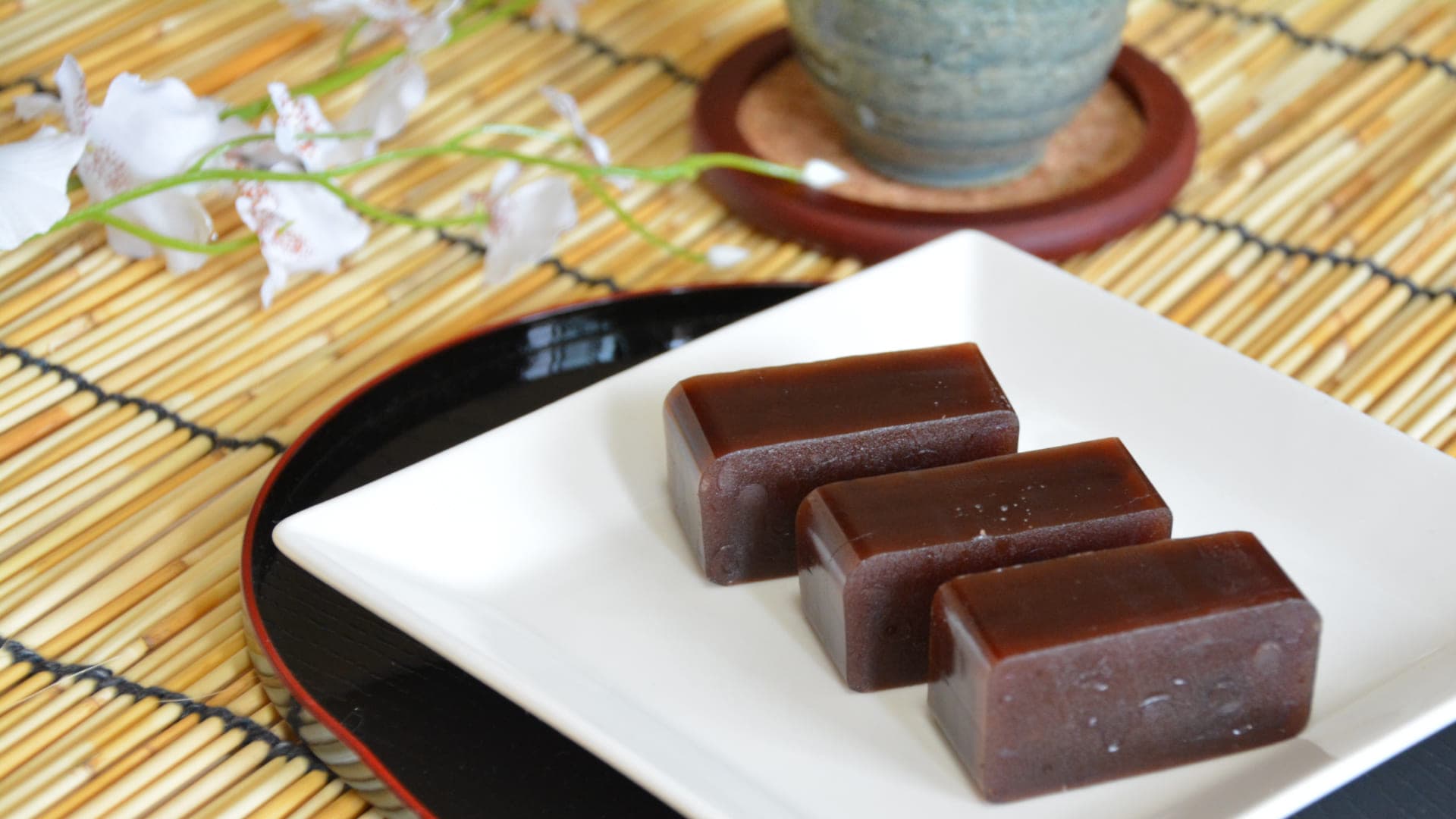
Yōkan is a traditional Japanese confection made from sweet bean paste and agar, known for its moist, firm texture. An essential sweet in tea ceremonies, its clean-cut appearance and glossy surface embody Japanese aesthetics.
Varieties include neri-yōkan (standard bean paste type), mizu-yōkan (clear, more gelatin-like variety), and kuri-yōkan (made with chestnuts). With its long shelf life and stable flavor, yōkan makes an elegant gift choice and is valued in traditional Japanese confectionery.
Others
Besides the dishes introduced so far, Japan offers many other appealing foods. In this section, we'll introduce some other notable examples.
45. Kushiyaki
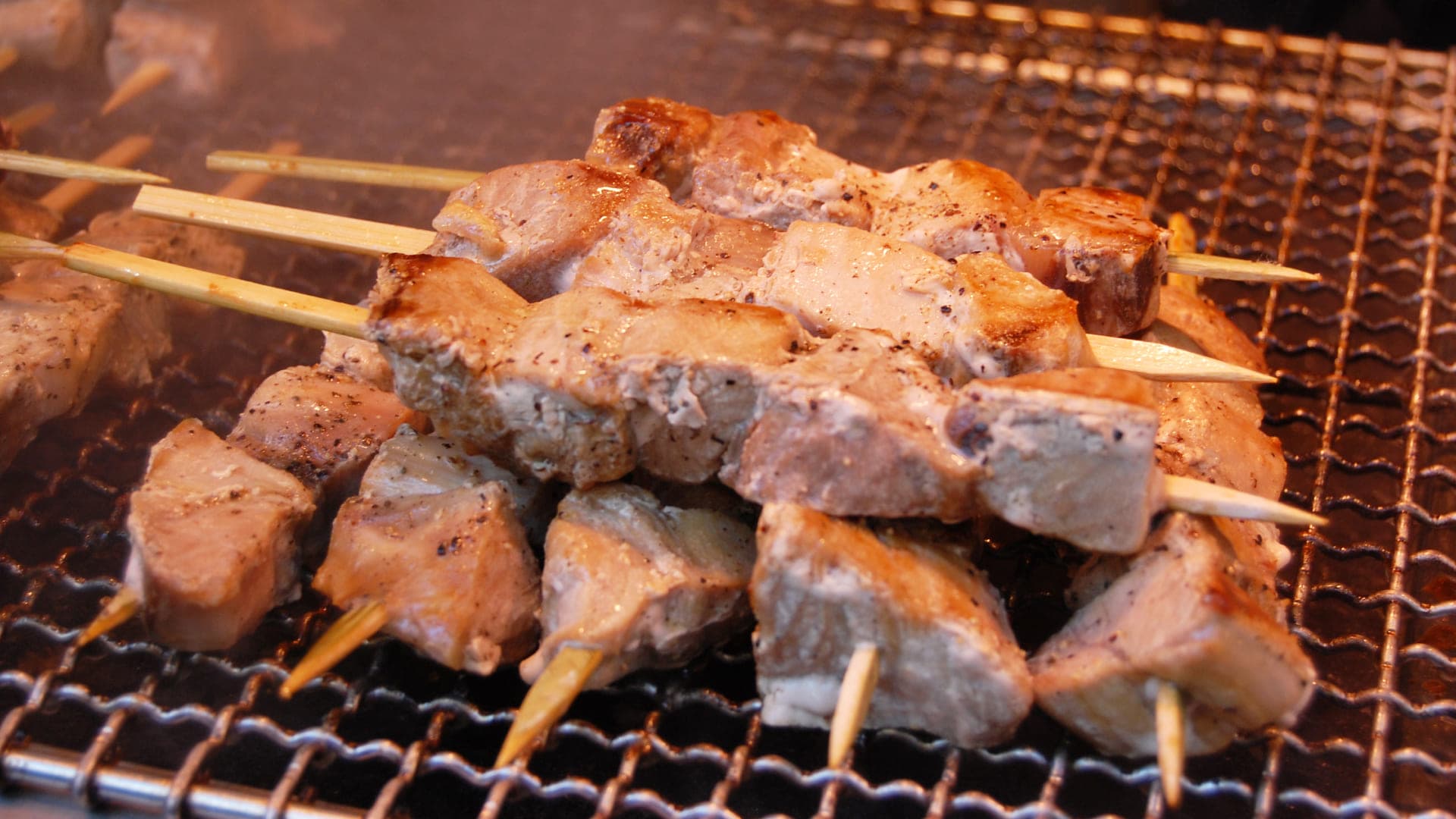
Kushiyaki is a deceptively simple yet profound dish of various ingredients grilled on skewers over charcoal. It ranges from luxury items like grilled eel (unagi) to casual options like offal, pork belly, fish, and vegetables. The charcoal grilling creates a distinctive aroma while bringing out the ingredients' natural umami flavors.
Popular at both izakaya and festival food stalls, kushiyaki is loved for its convenience as walking street food. Many items can be enjoyed with either salt or sauce seasoning.
46. Takoyaki
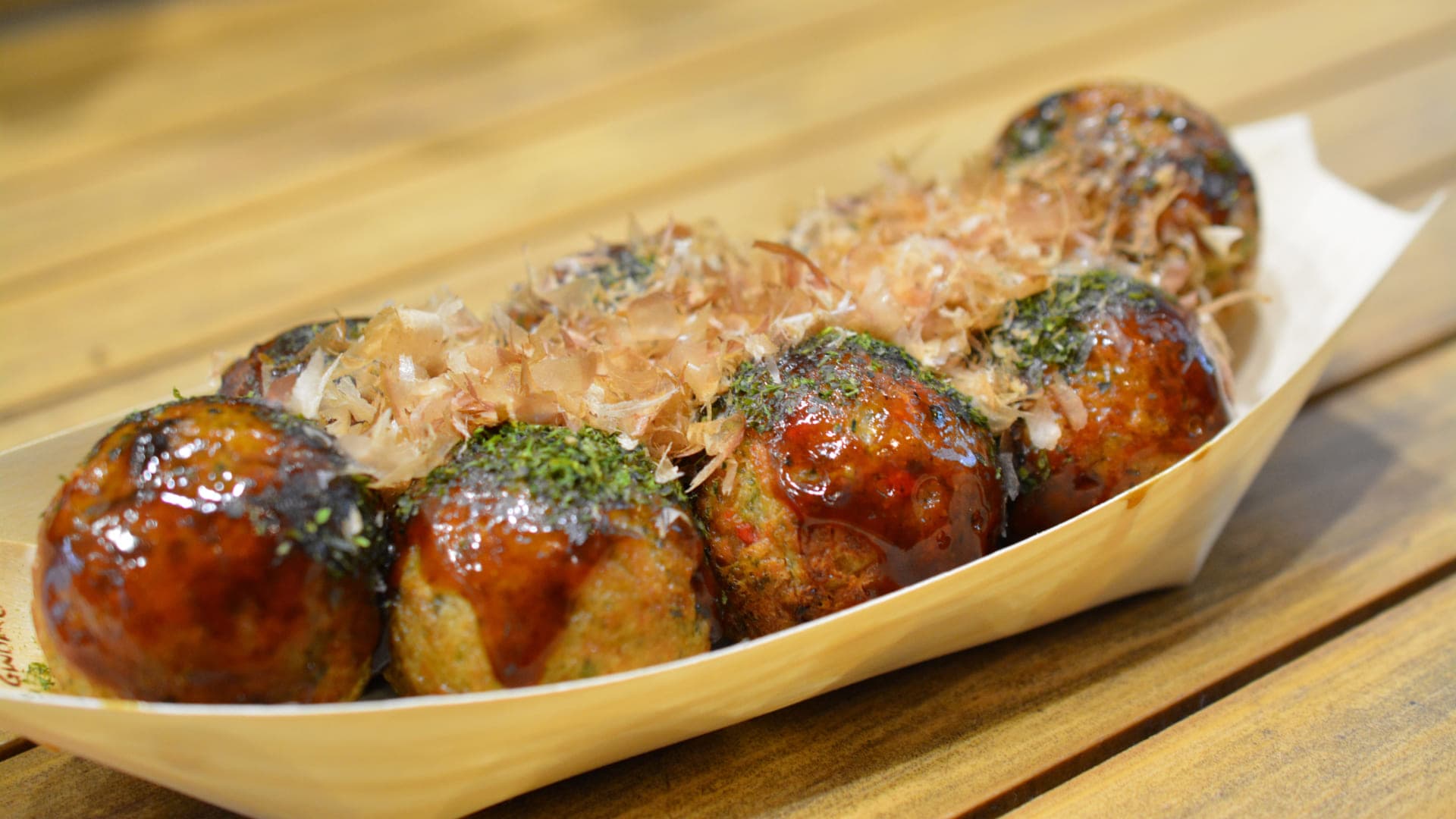
Takoyaki is a signature dish from Osaka - octopus dumplings made from wheat flour batter, cooked in a special molded pan to create balls that are crispy outside and creamy inside. They're typically topped with sauce, dried seaweed, bonito flakes, and mayonnaise.
As a cornerstone of Osaka's flour-based food culture, takoyaki is so deeply rooted that it's said every household owns a takoyaki maker (if you visit Osaka, try asking locals to verify this!). A staple at festivals and food stalls nationwide, this beloved street food represents Japan's casual cuisine, bringing smiles to people's faces as they eat the piping hot dumplings with bamboo skewers.
47. Okonomiyaki
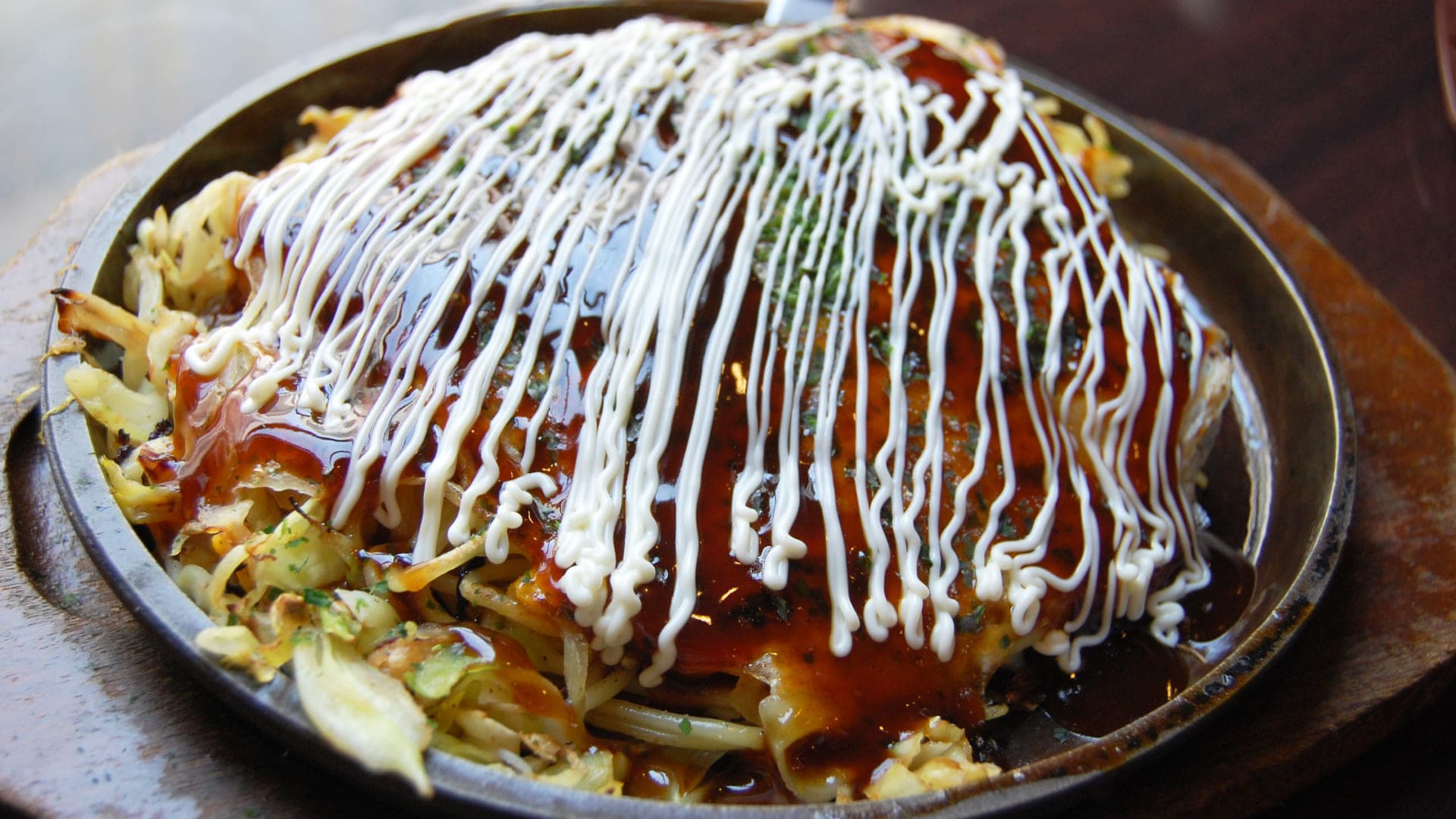
Okonomiyaki is a Japanese dish made from wheat flour batter mixed with shredded cabbage, meat, and eggs. It's especially famous in Osaka and Hiroshima, where it has evolved into distinct regional specialties.
The Osaka style combines all ingredients before cooking ("mixed style"), while Hiroshima style layers the ingredients including noodles ("layered style"). Both are topped with sauce, mayonnaise, dried seaweed, and bonito flakes. Named for its customizable ingredients ("okonomi" meaning "as you like"), it's a popular communal dish enjoyed by people of all ages.
48. Nikujaga
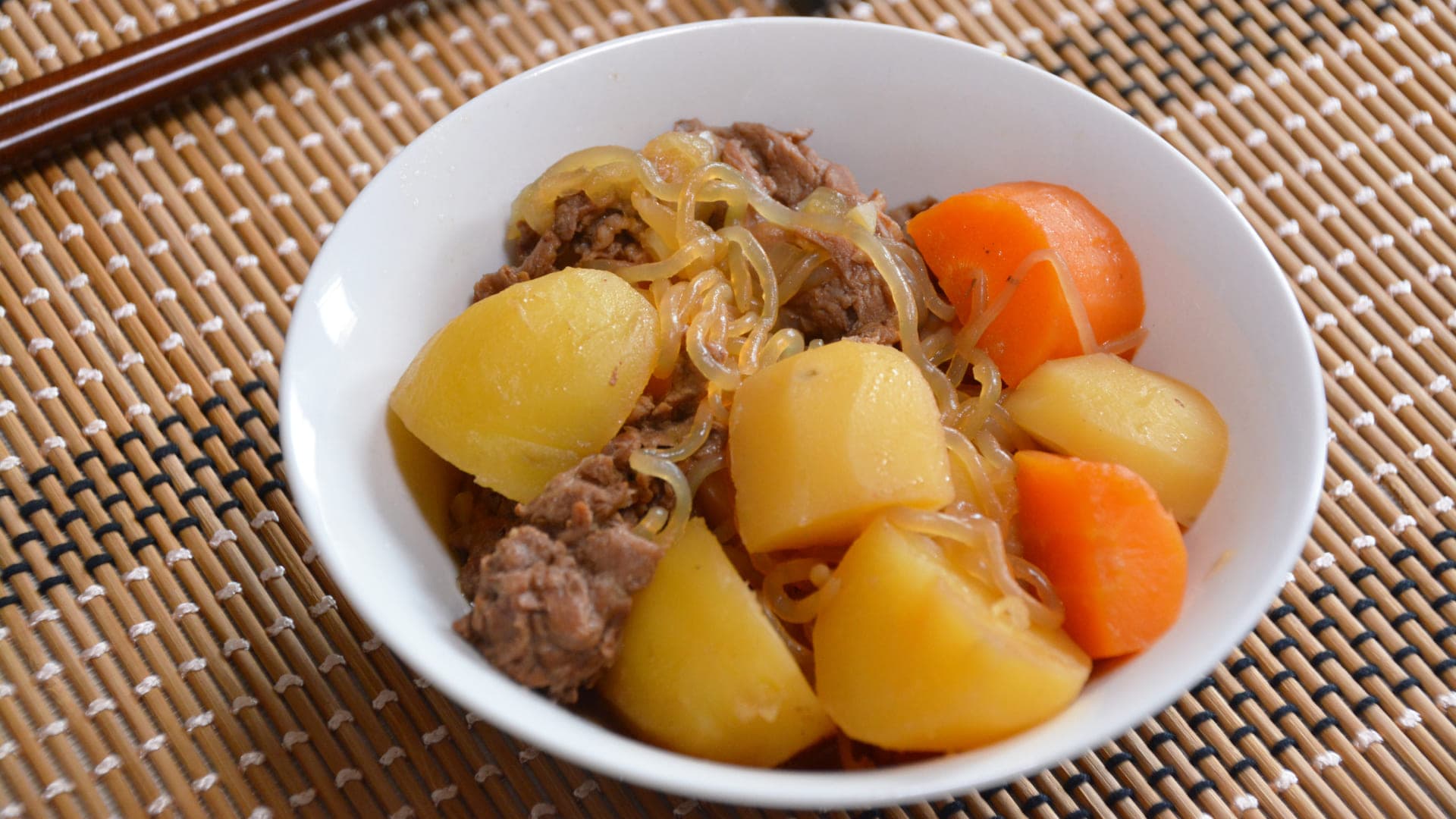
Nikujaga is a quintessential Japanese home-cooked dish, made by simmering potatoes, onions, and beef in a soy sauce-based broth. It is said to have its roots in the adaptation of Western meat dishes into a Japanese style during the Meiji period, showcasing the harmonious blend of Eastern and Western culinary influences.
The tender potatoes, sweet onions, and the rich umami from the beef broth pair exquisitely with plain white rice. Nikujaga is a nostalgic dish that evokes memories of home-cooked meals for many Japanese people, and it has recently gained attention internationally as a representative example of traditional Japanese home cooking.
49. Tsukemono (Japanese pickles)
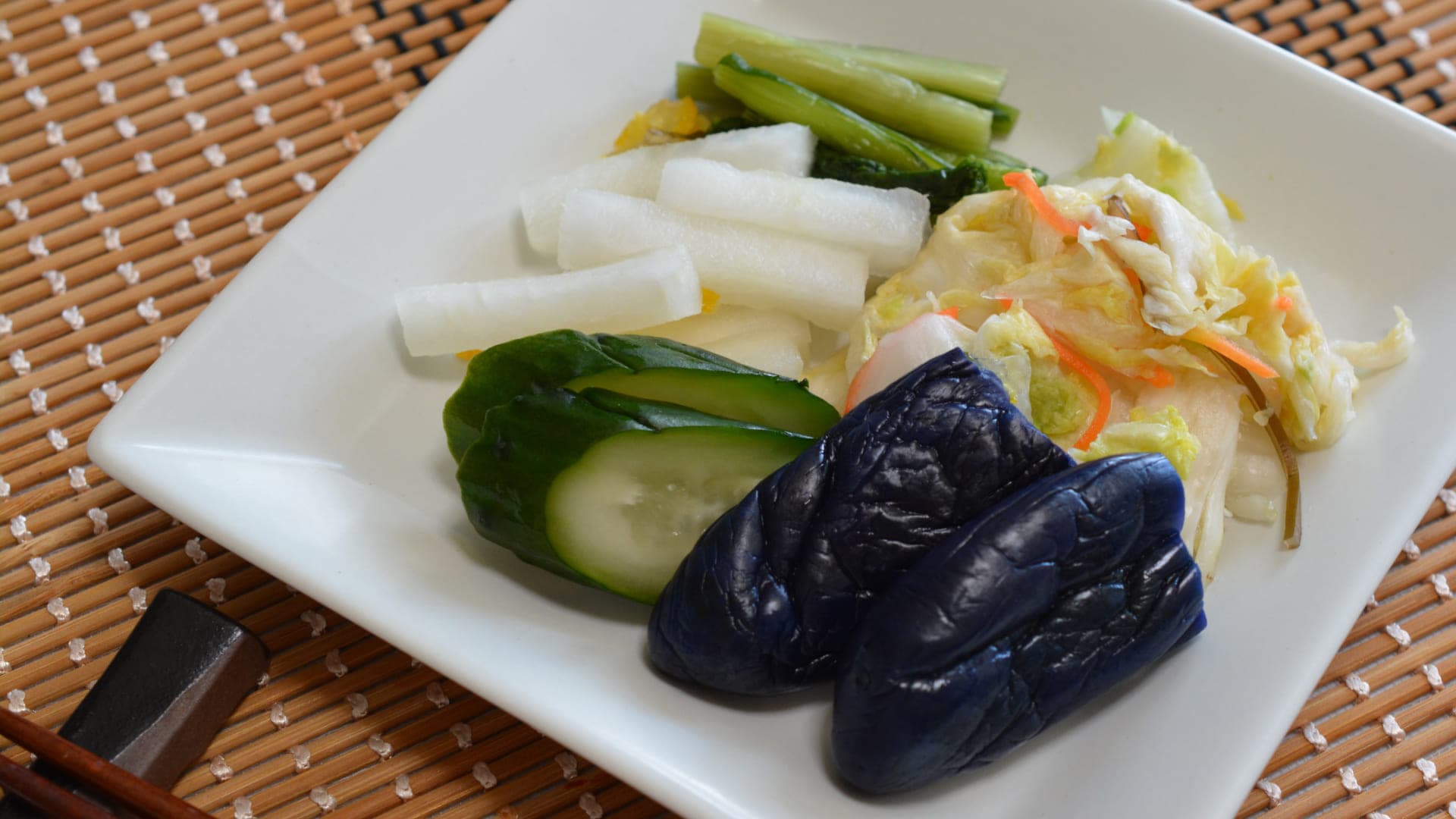
Tsukemono are traditional Japanese pickled and fermented vegetables that have been preserved with salt, rice bran, or miso. They are an indispensable accompaniment to plain white rice and are almost always served as part of a traditional Japanese meal.
From the refreshing crunch of lightly pickled vegetables to the deep, complex flavors of long-fermented tsukemono, there is a wide variety to explore. Local and regional traditions have resulted in diverse pickling methods and flavor profiles, making tsukemono popular omiyage (souvenirs) from different parts of Japan.
Using seasonal, prime ingredients, tsukemono offer the chance to sample Japan's culinary bounty. Furthermore, the rising appreciation for fermented foods has brought increased attention to the excellent preservative qualities and potential health benefits of these traditional pickles.
50. Tea
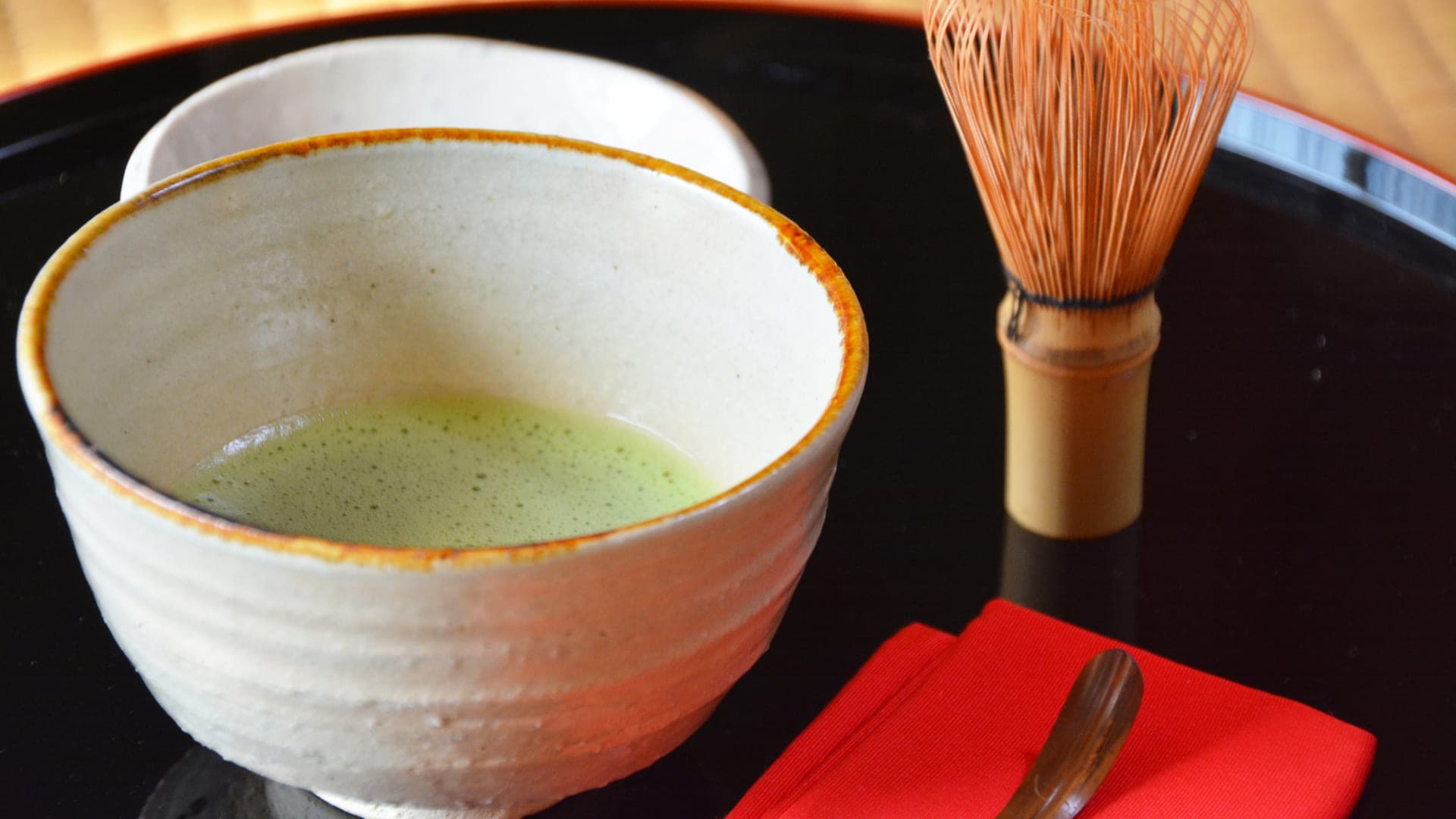
Tea is a fundamental part of Japanese culinary culture, cultivated over centuries as an integral part of both dining and spiritual traditions. Tea embodies the Japanese value of "hospitality," or "omotenashi," deeply connecting the beverage to Japan's cultural identity.
Green tea, with its refreshing aroma and vibrant green color, is the quintessential Japanese tea. However, the variety extends beyond green tea to include sencha, gyokuro, hojicha, and genmaicha, each with its own distinct flavor profile that can be further enhanced by brewing temperature and method.
In recent years, "tea ceremony experiences" have gained popularity among international visitors, allowing them to immerse themselves in the ambiance of traditional Japanese culture while savoring the nuances of tea. Those interested are encouraged to partake in this enriching cultural exploration.
Finally
How was that? In this article, we introduced 50 Japanese food items that we hope you will try when visiting Japan. In addition to the popular and well-known dishes, were there any that piqued your interest?
Each of these dishes embodies the history, wisdom, and the passionate pursuit of deliciousness of the local people and regions, which is at the very heart of Japanese culinary culture.
If we were to include the countless "regional specialties" and unique local dishes across Japan, the list would be overwhelming in its richness and variety. However, we hope this article has provided you with a glimpse into the incredible diversity and appeal of Japanese cuisine, and that you will be able to discover your own personal favorite during your travels.
We sincerely hope you will encounter that perfect, unforgettable dish that will leave a lasting impression.
Thank you for reading all the way to the end!
We'll see you in the next article!